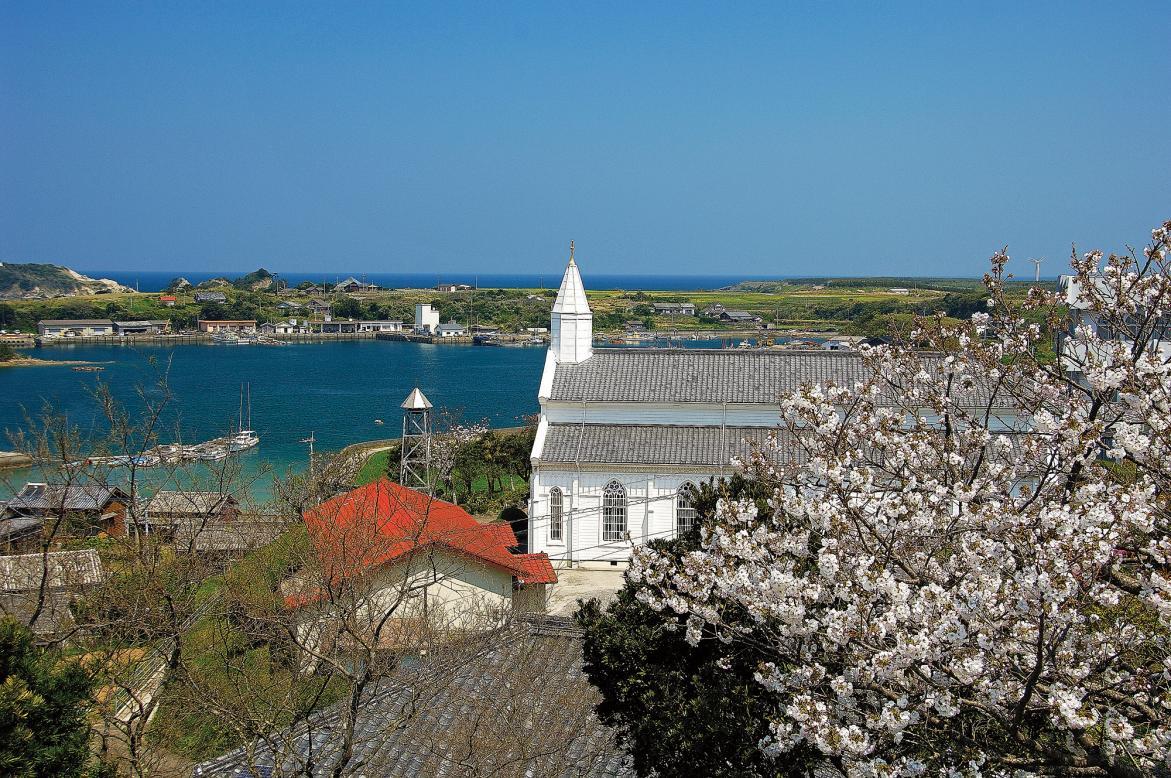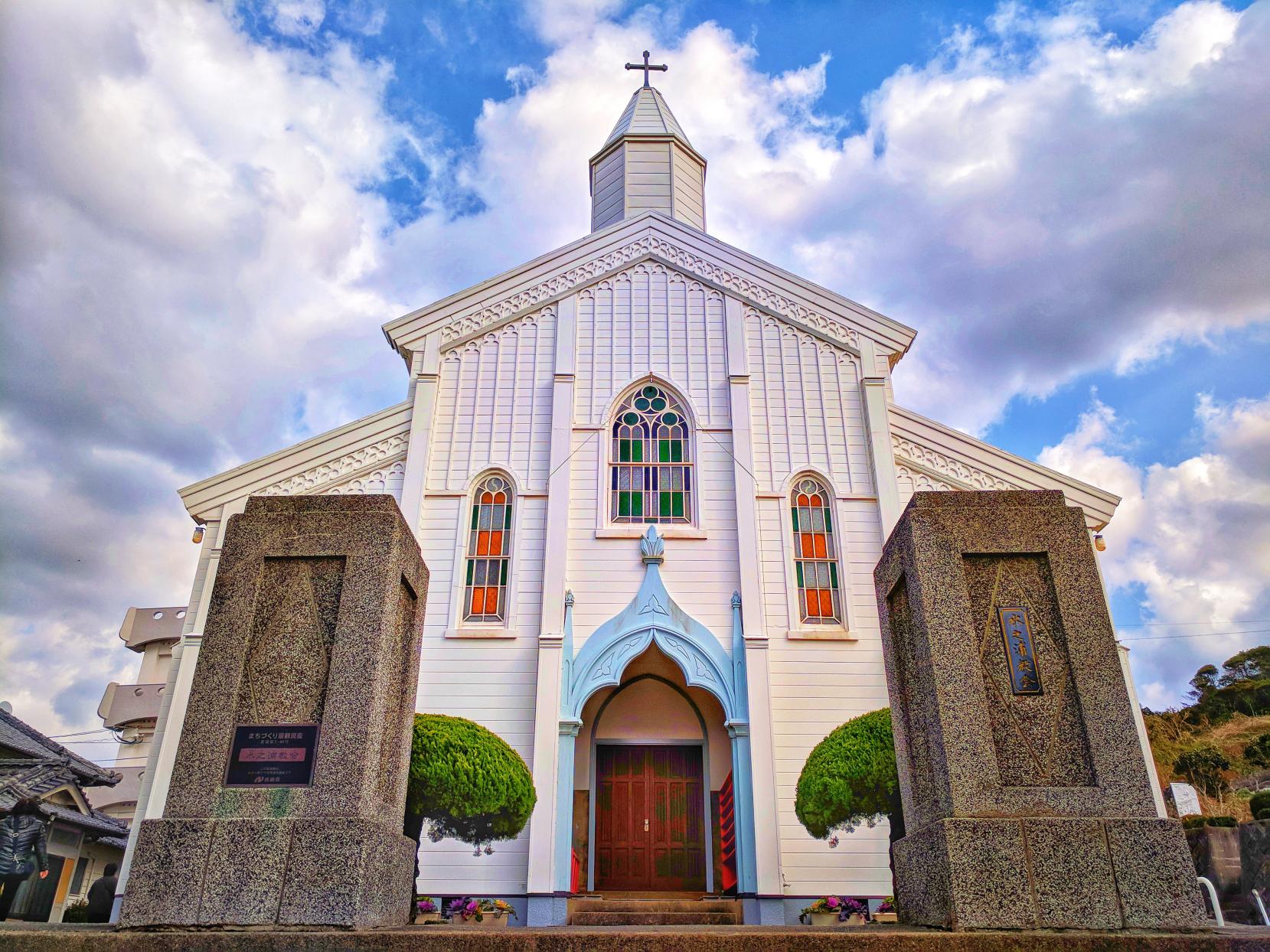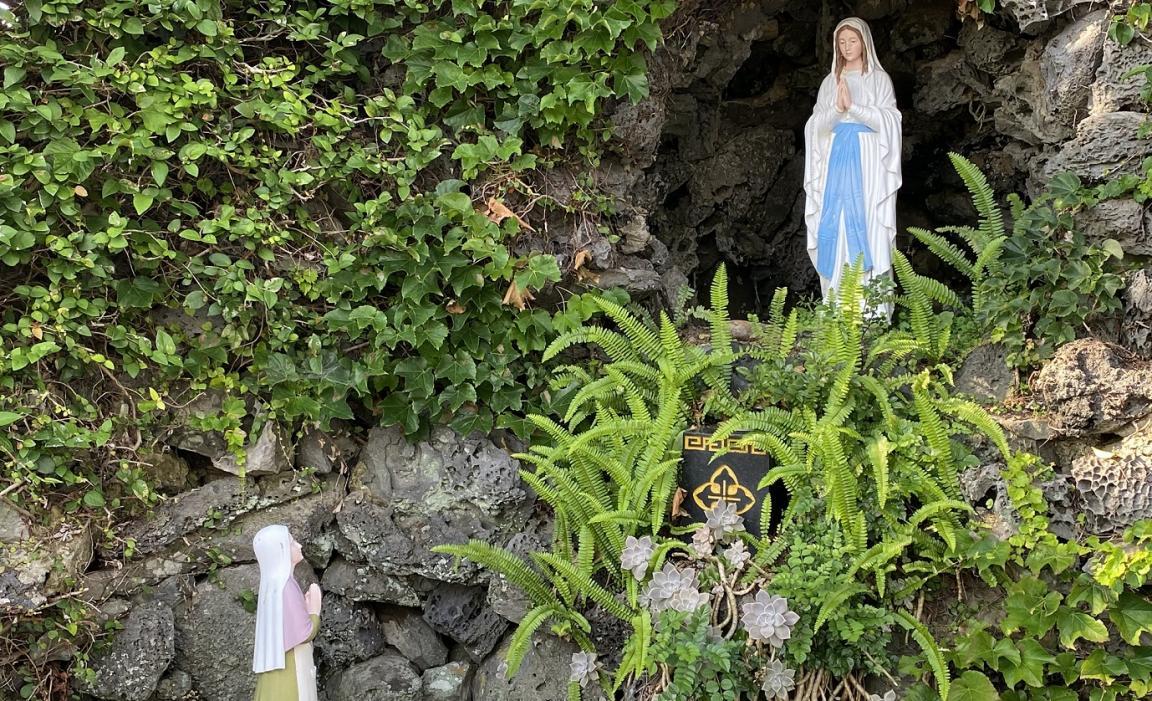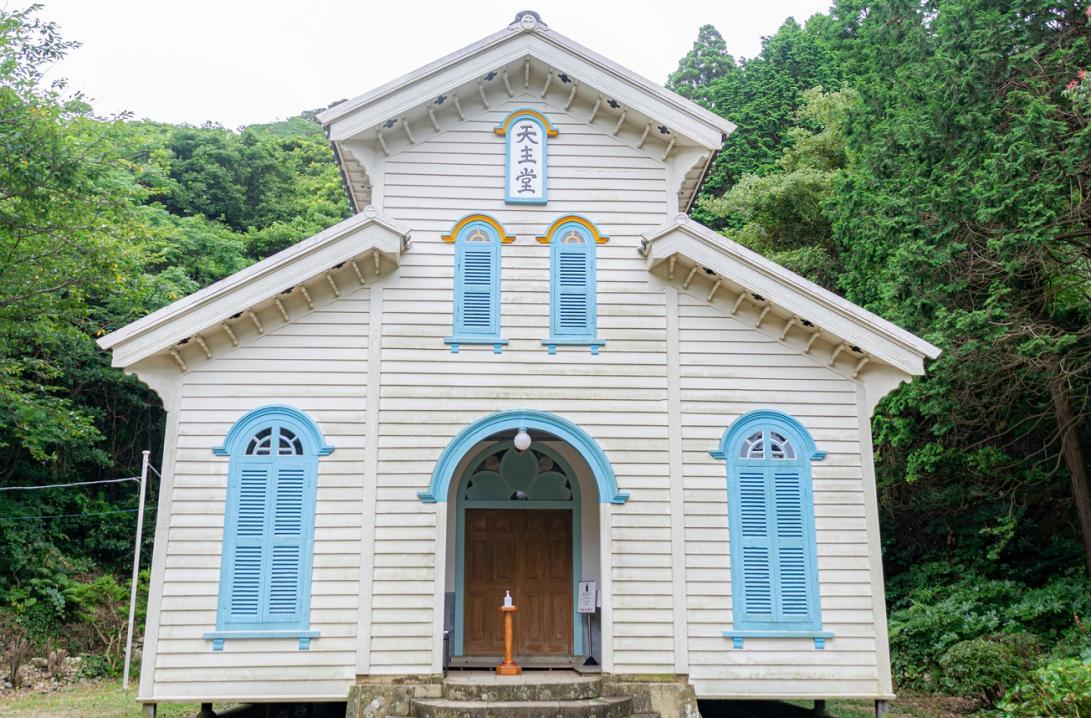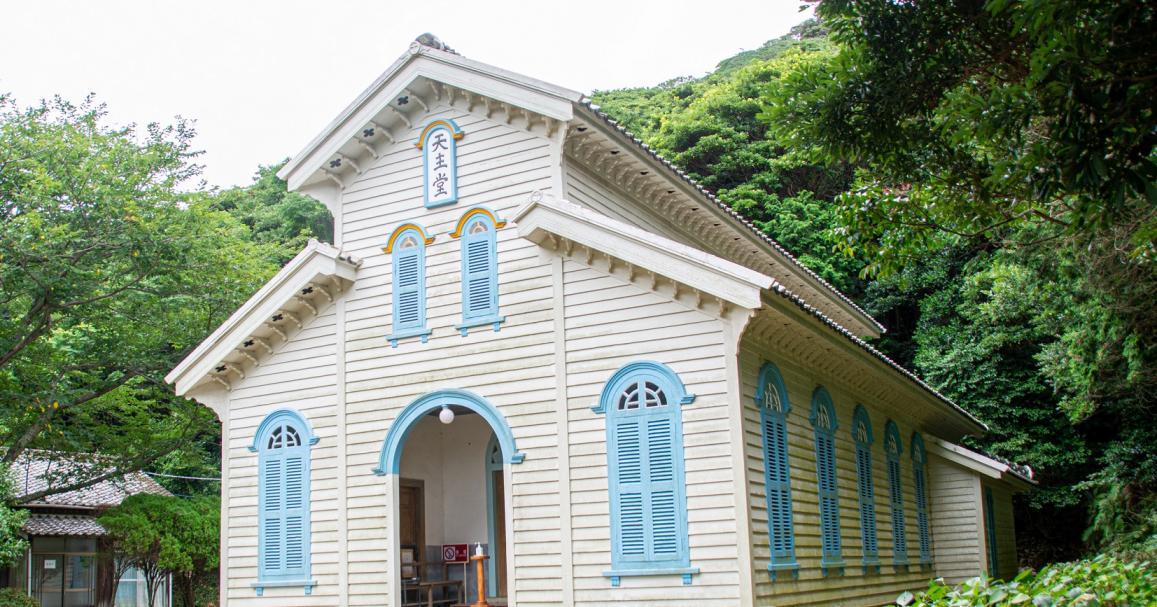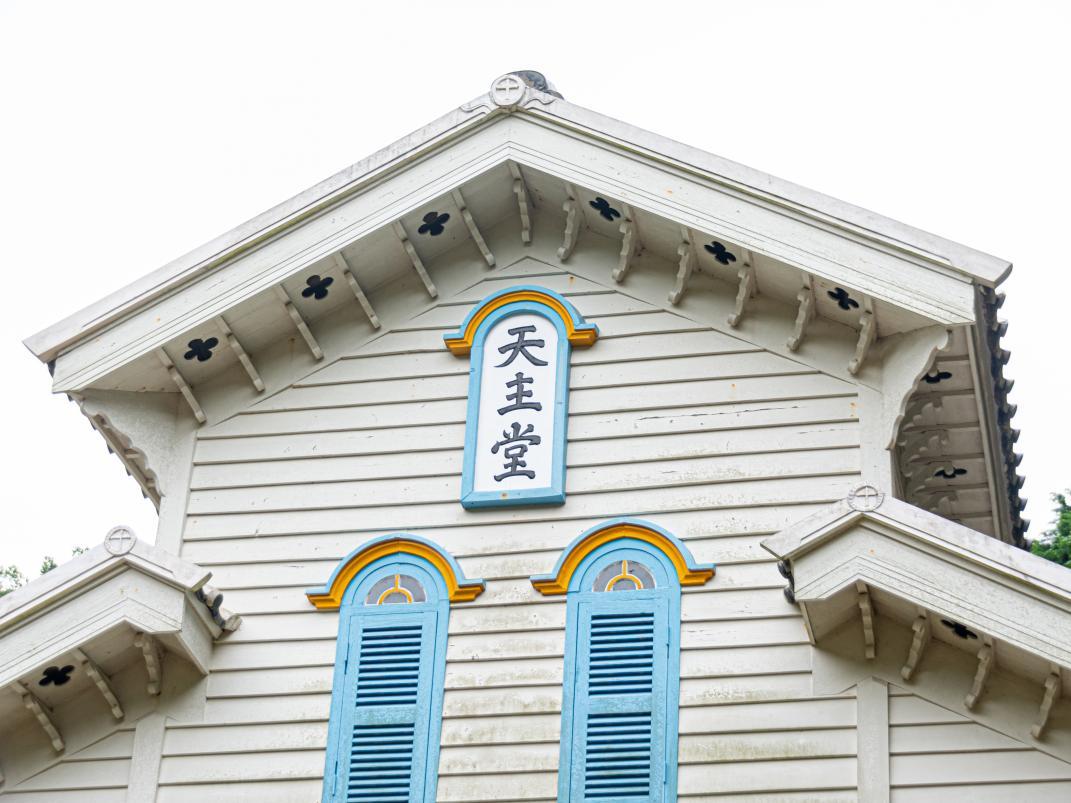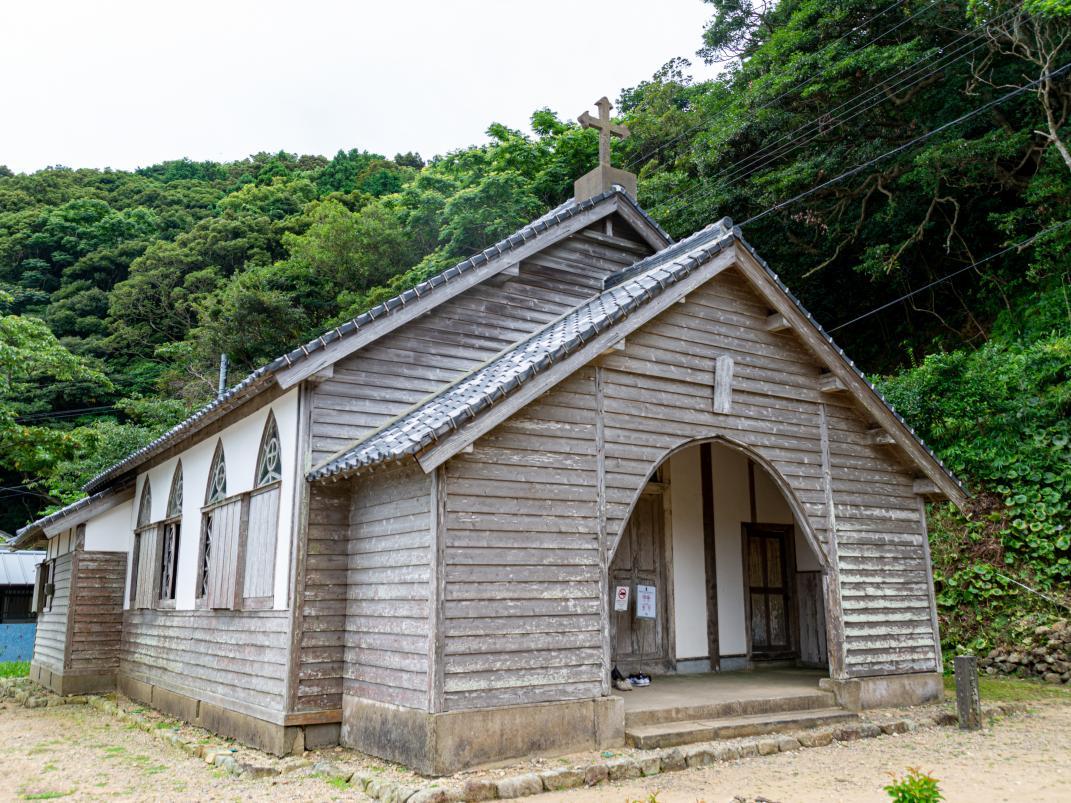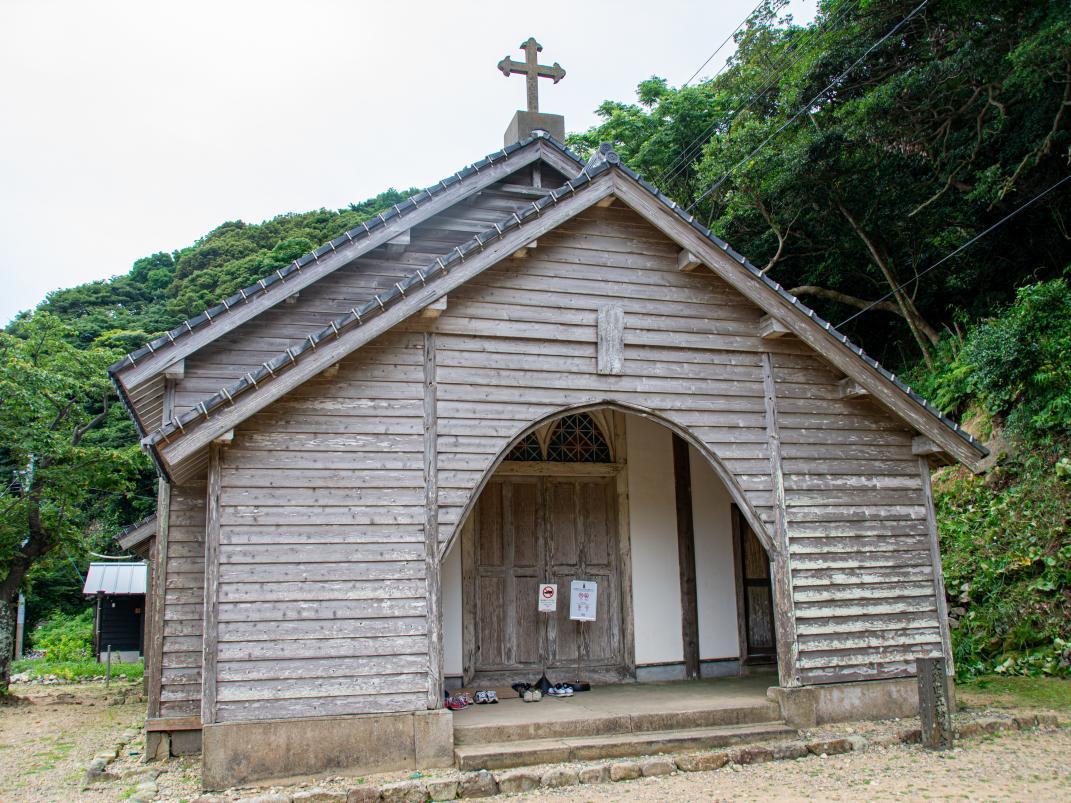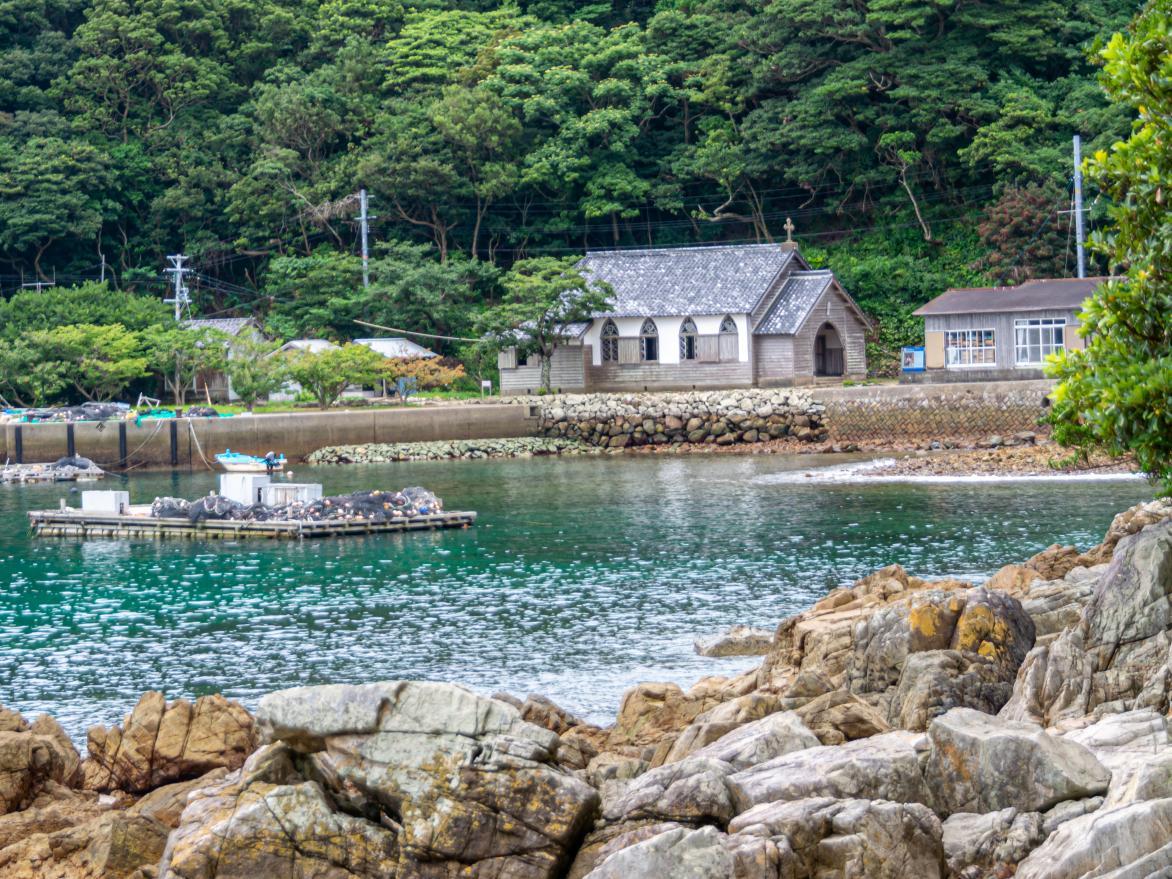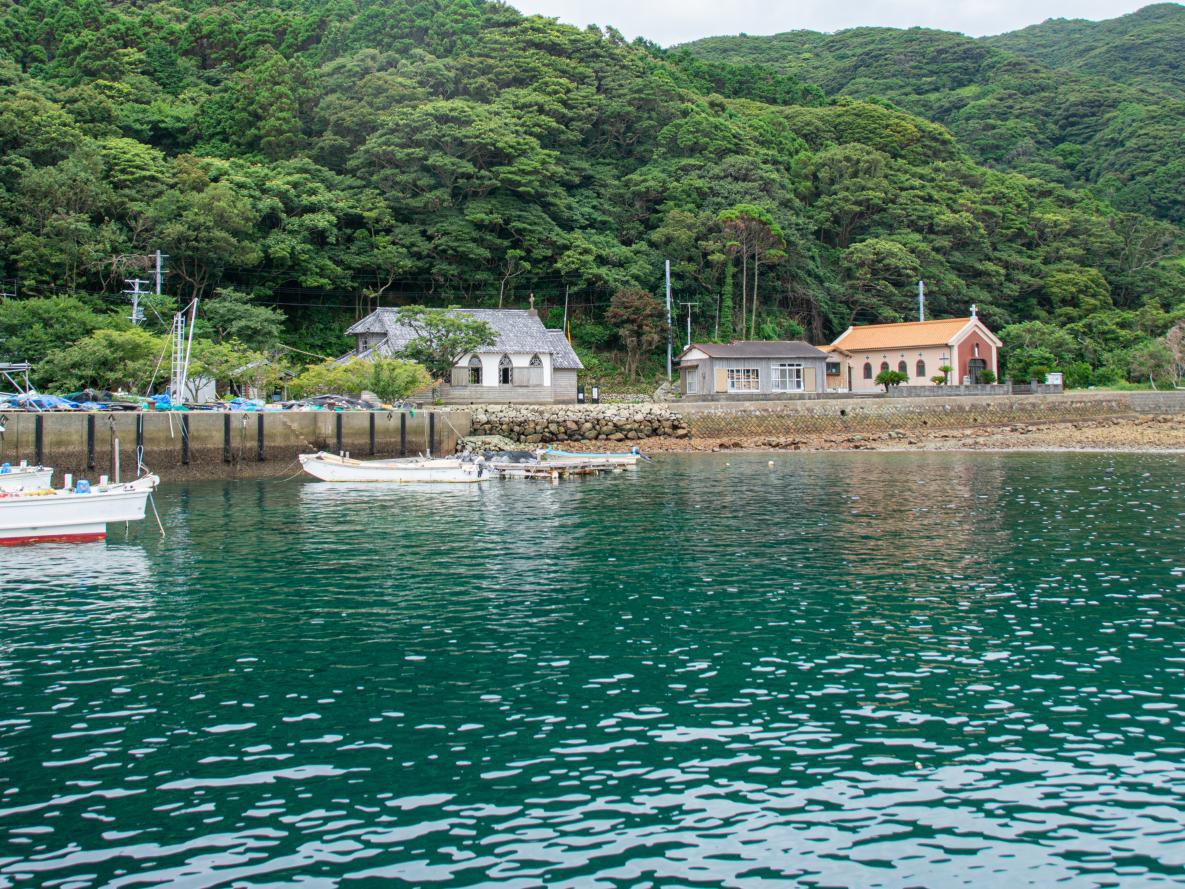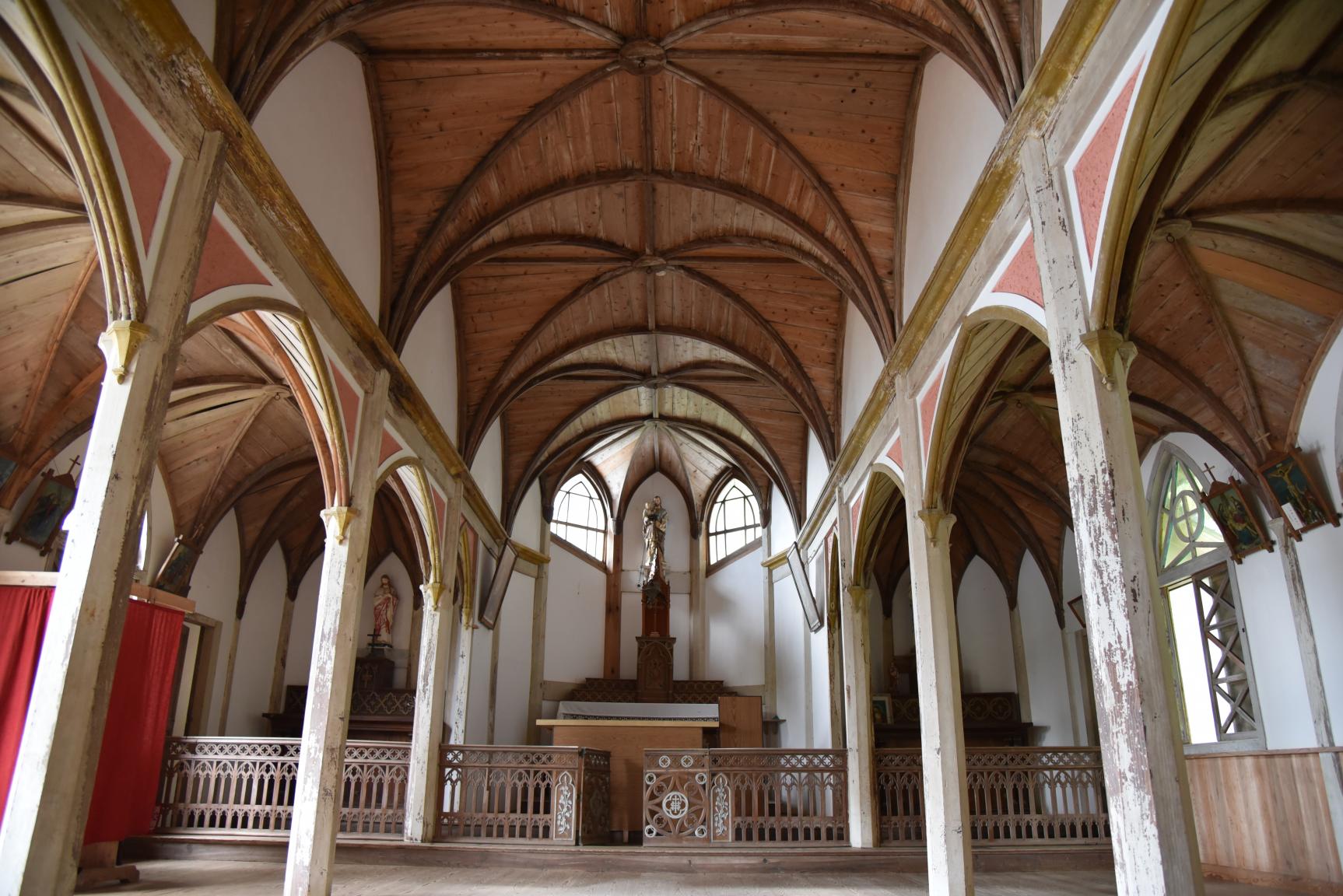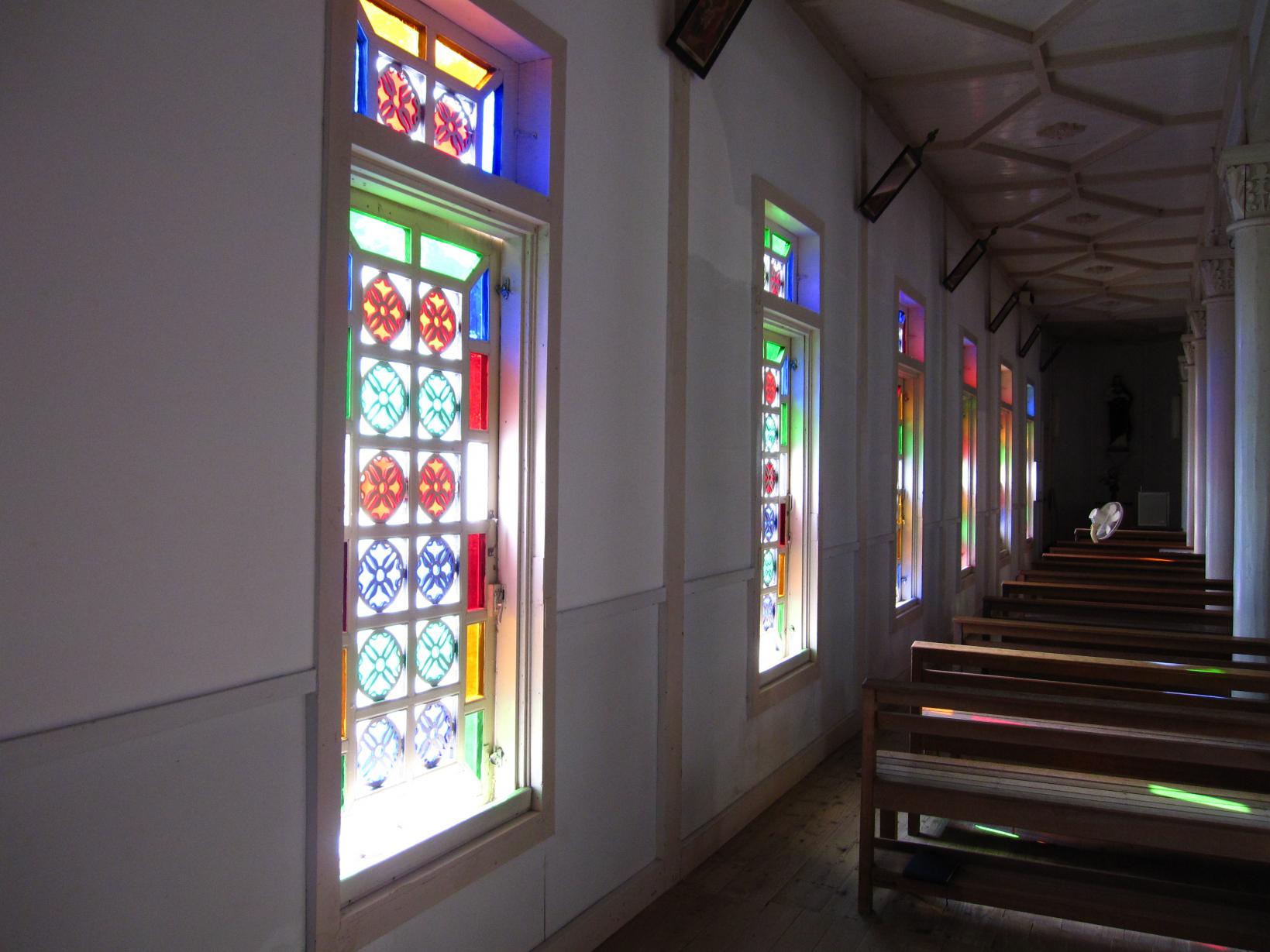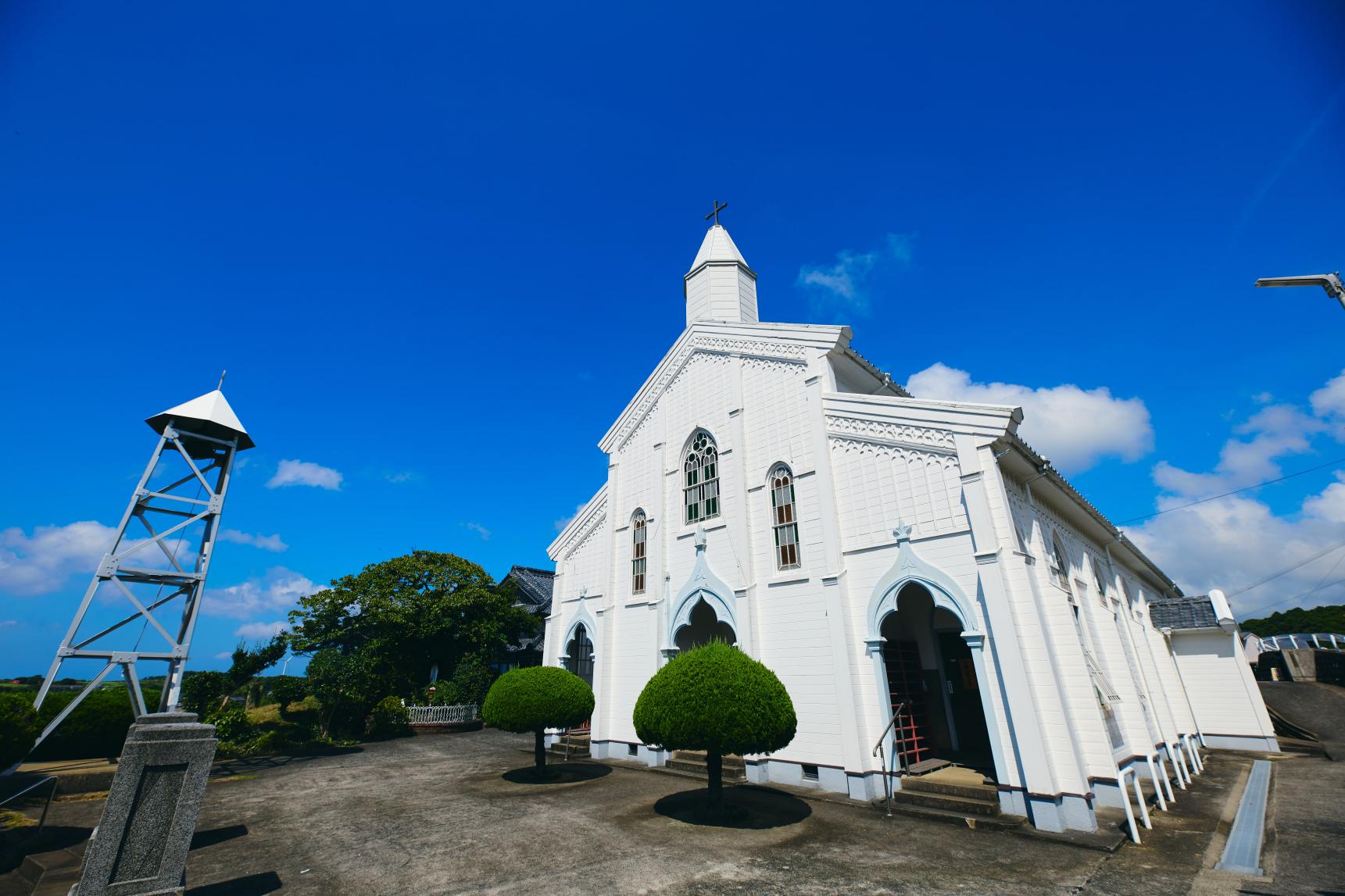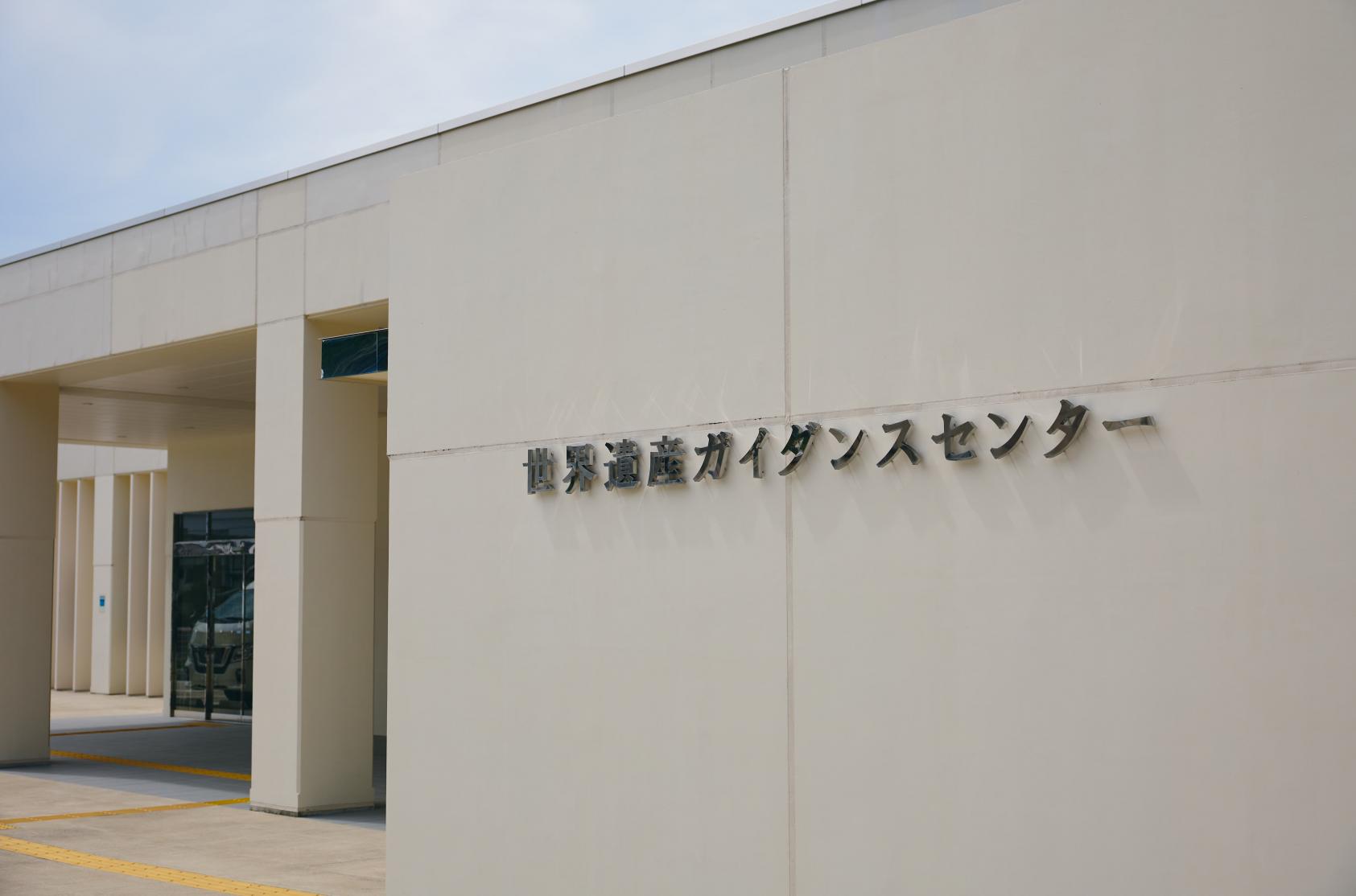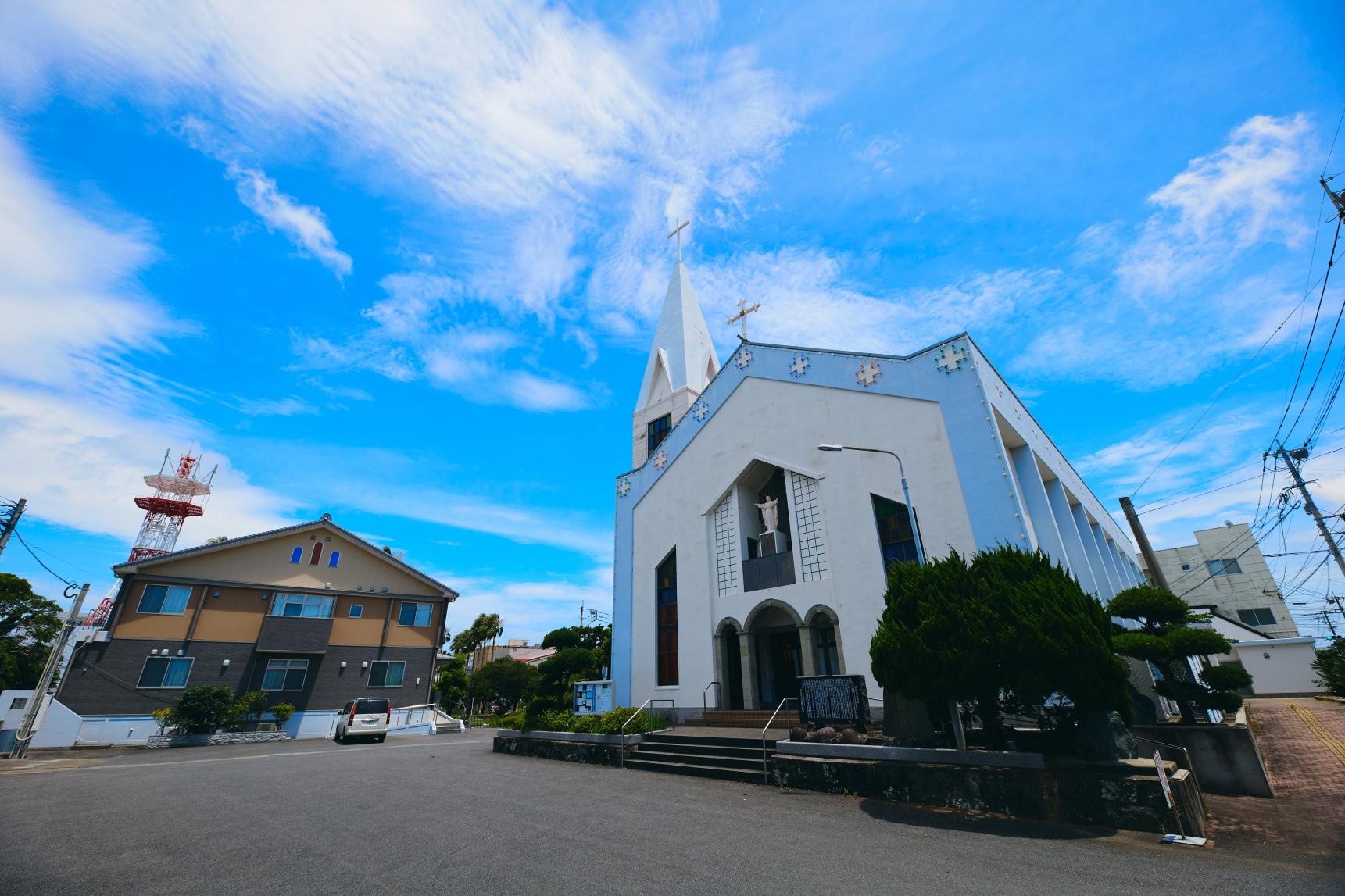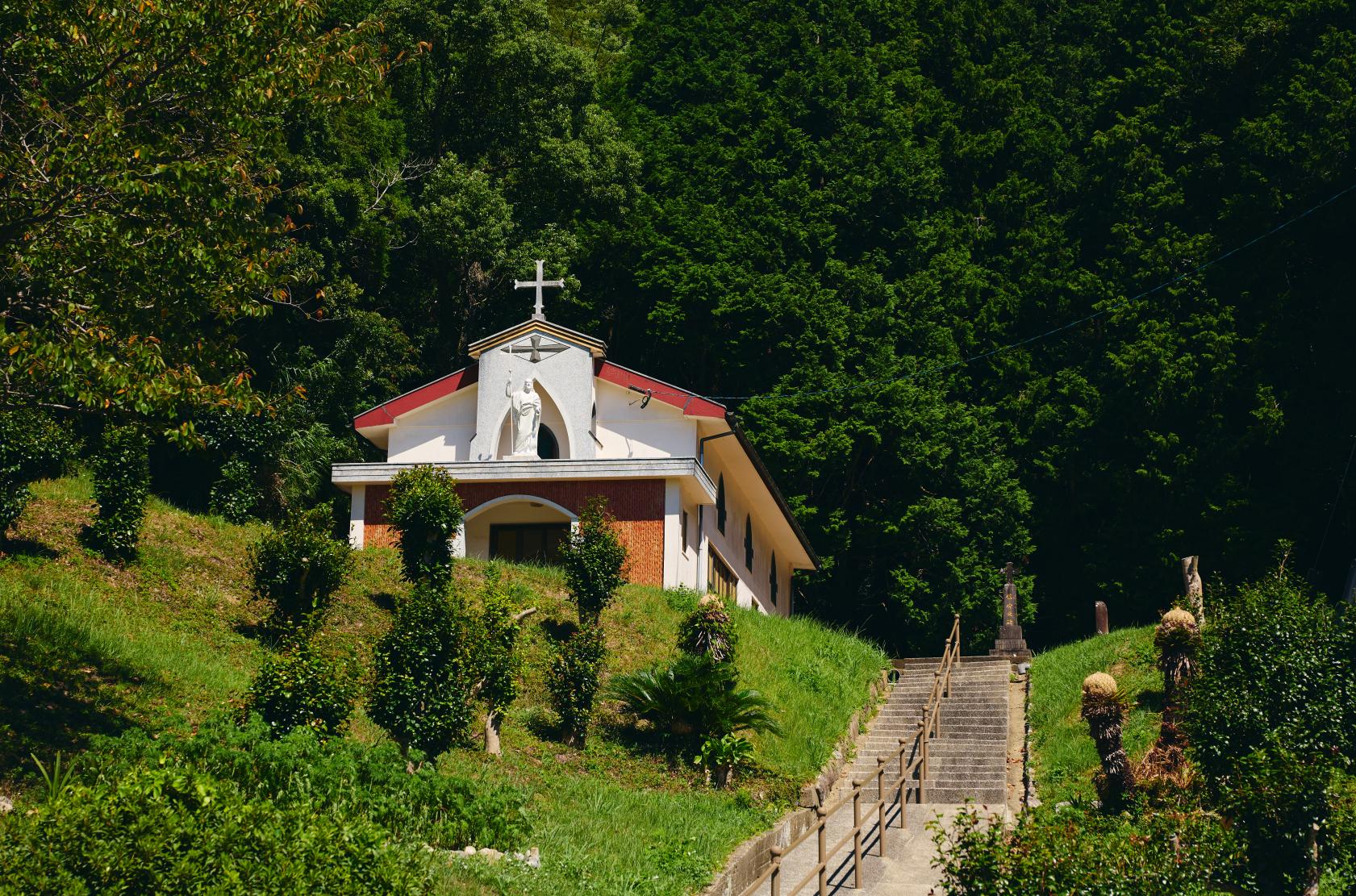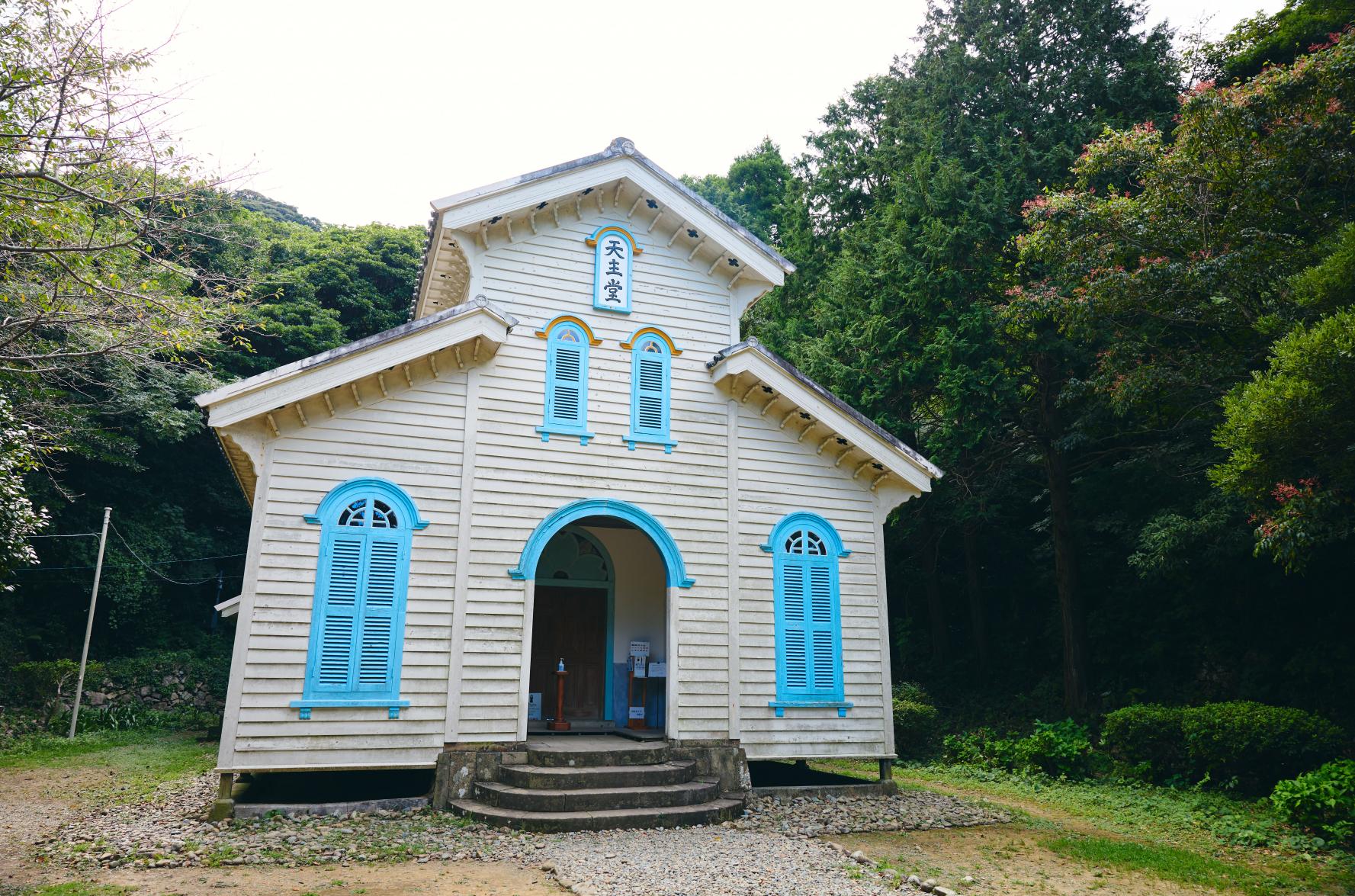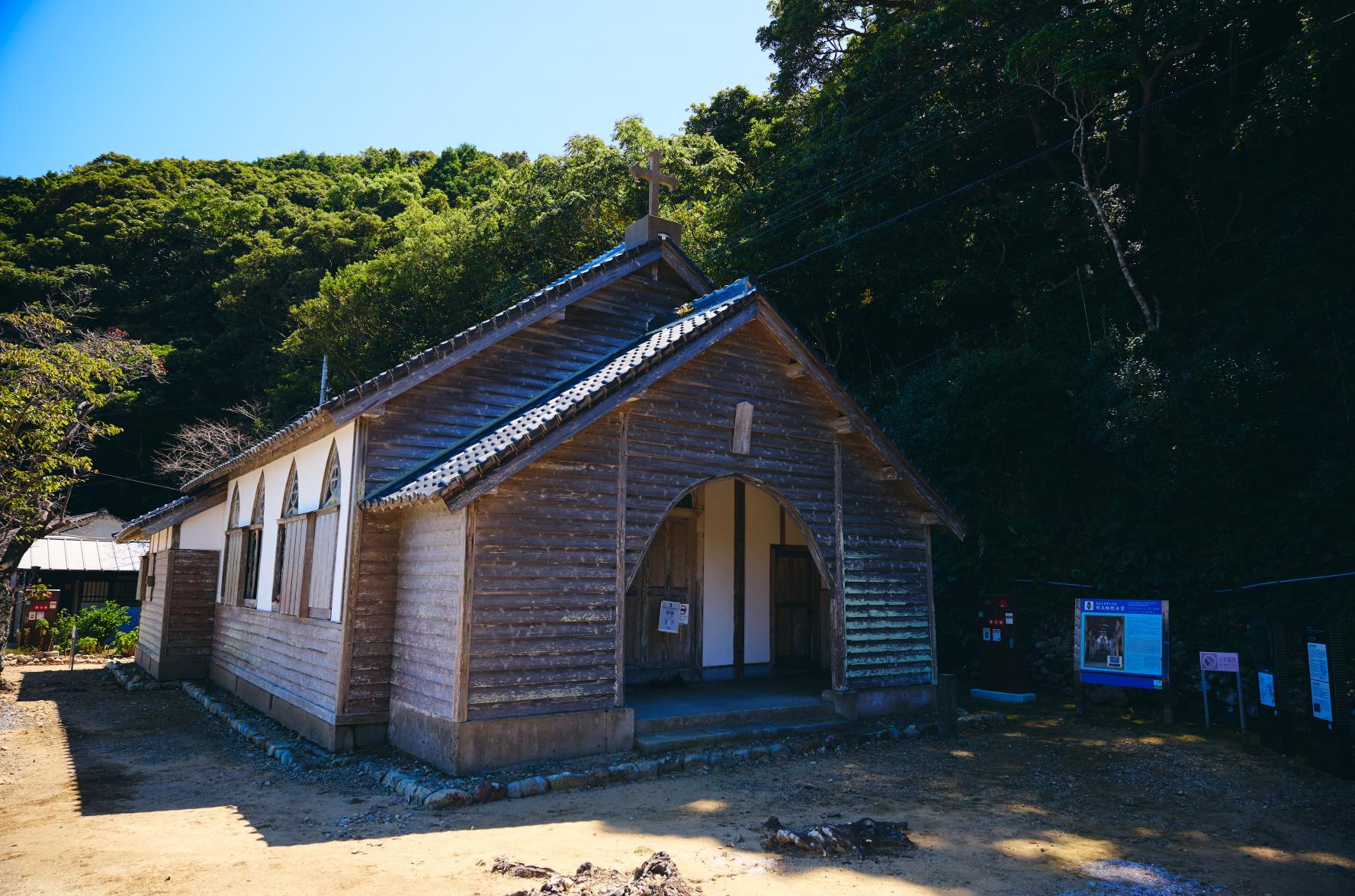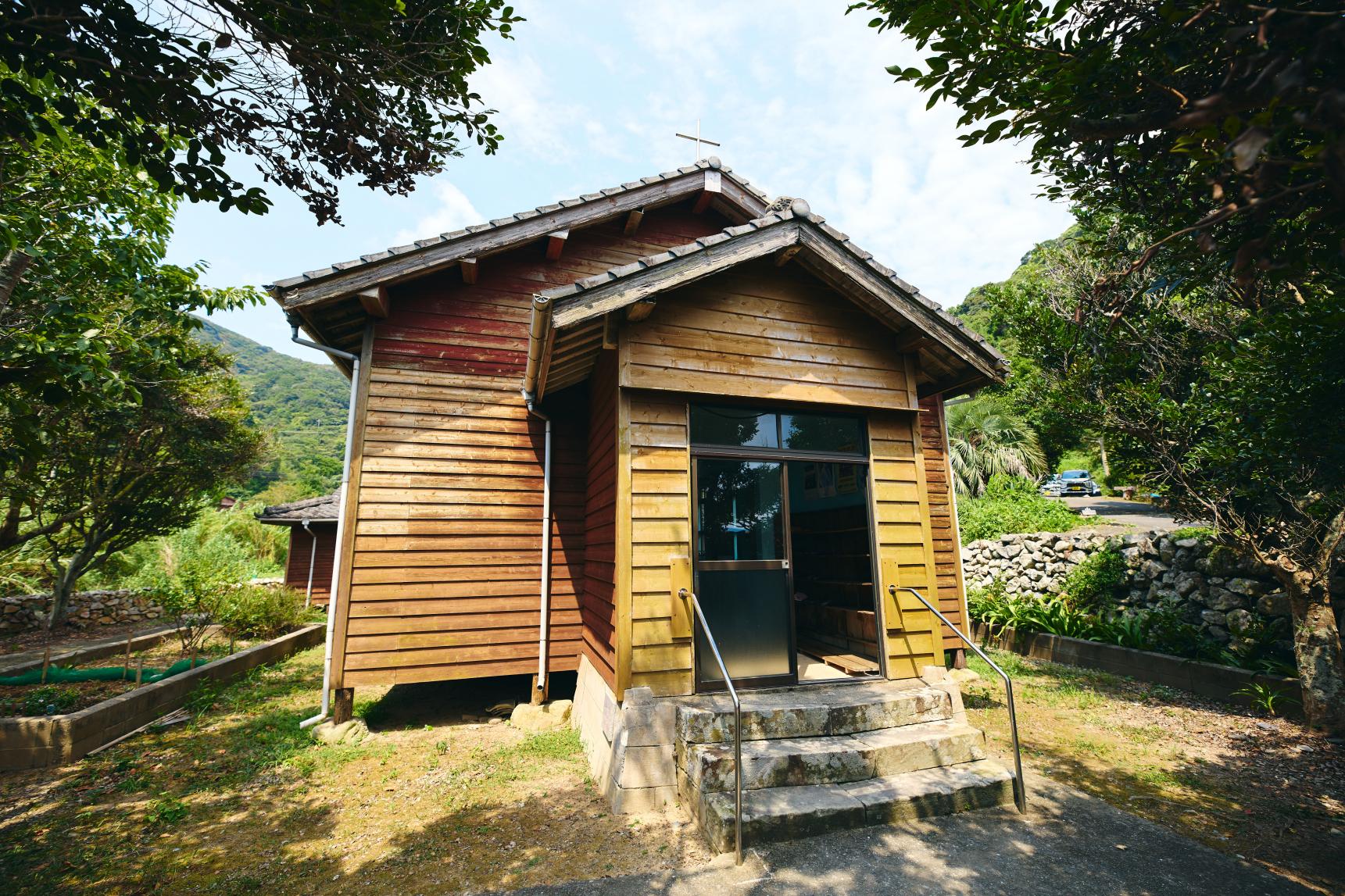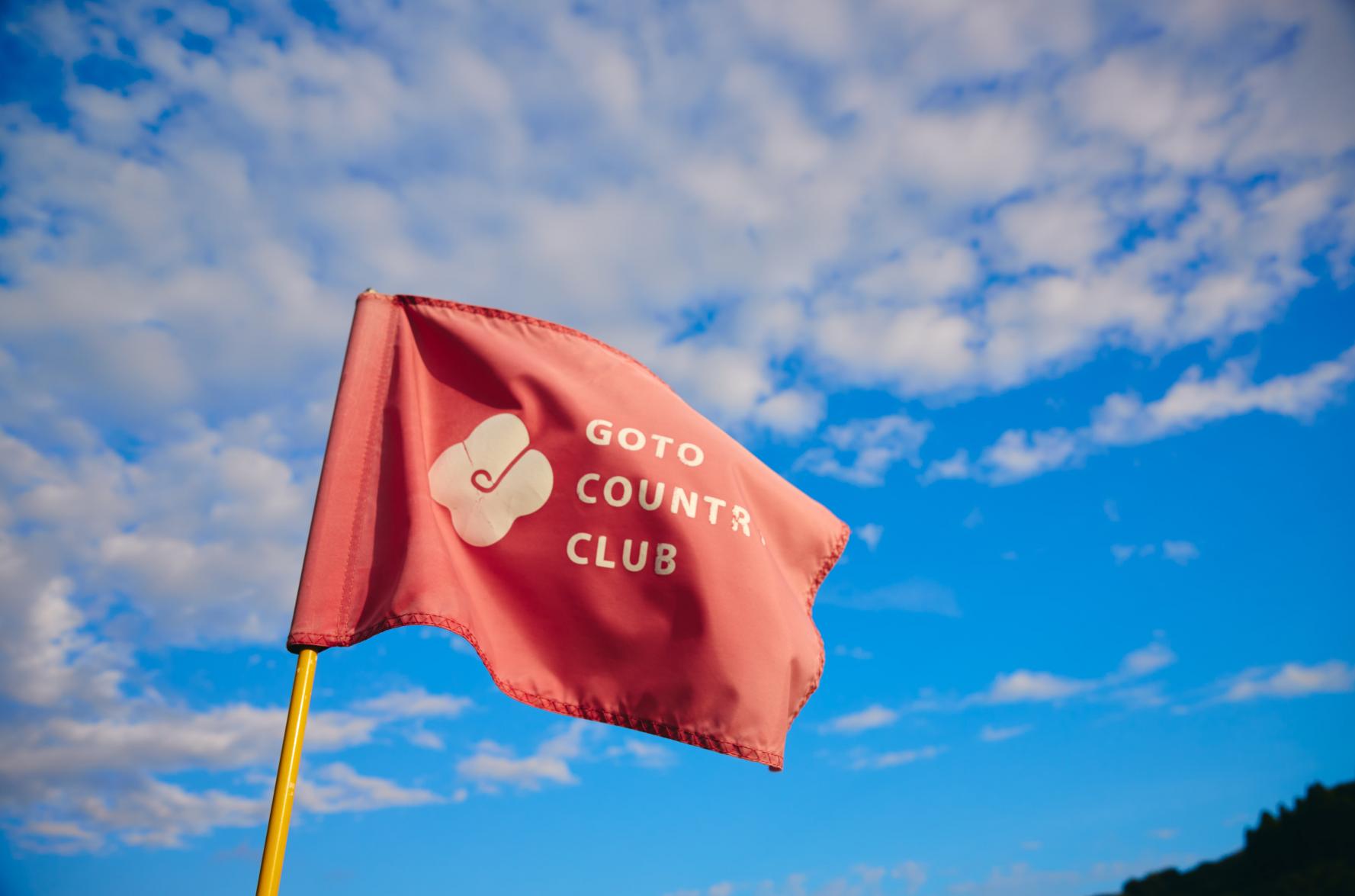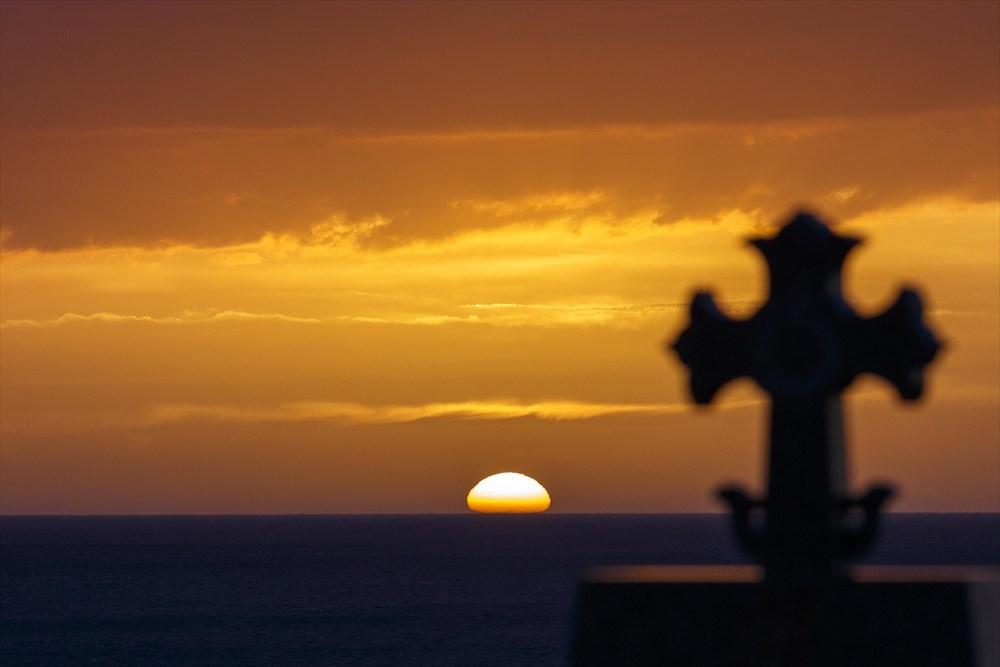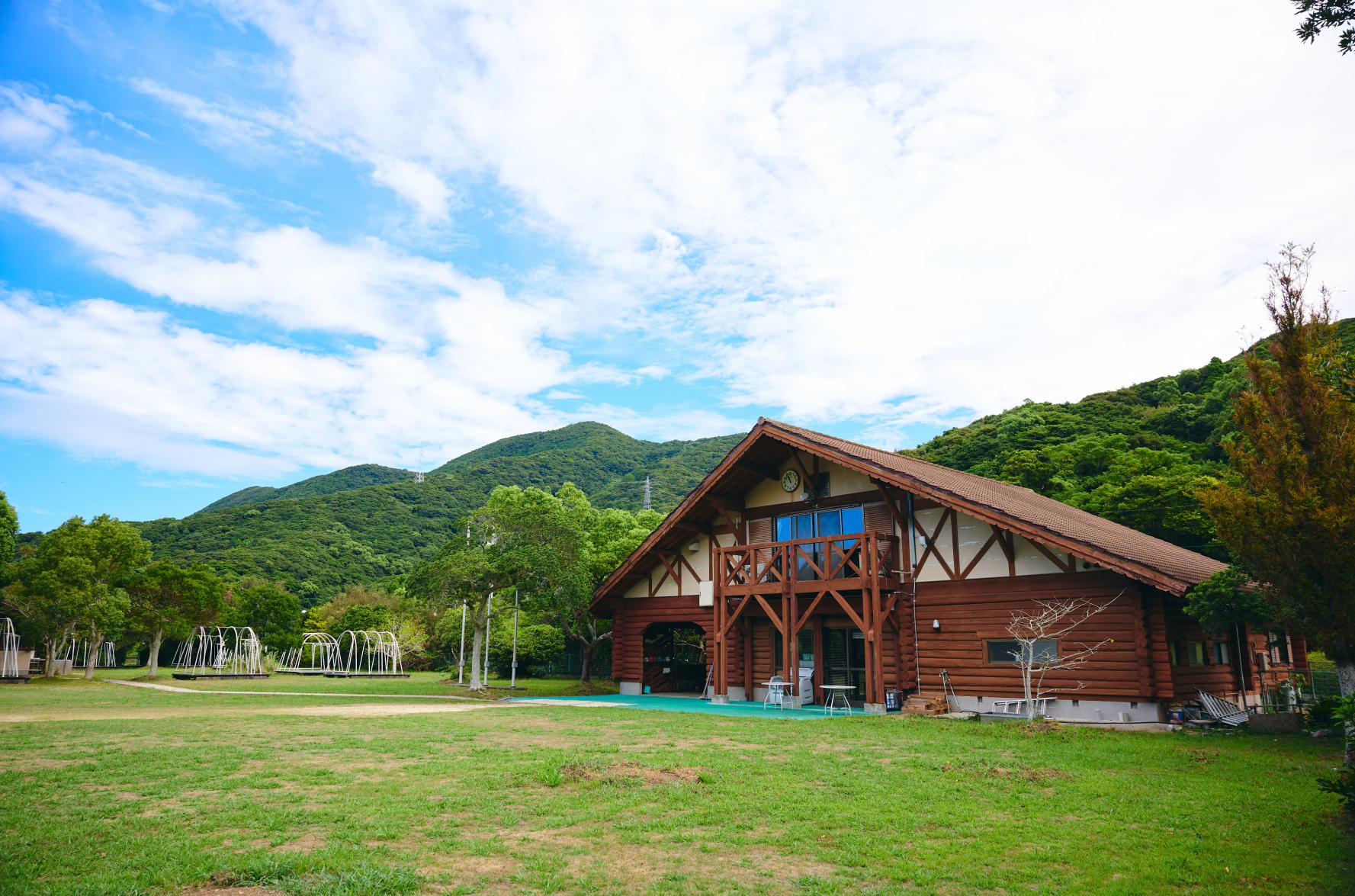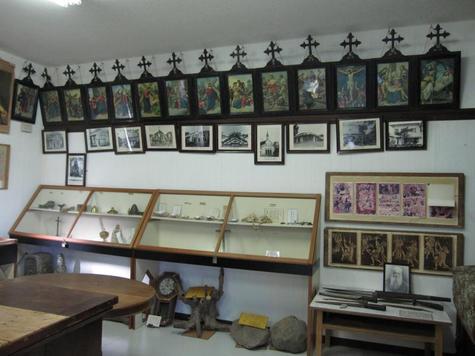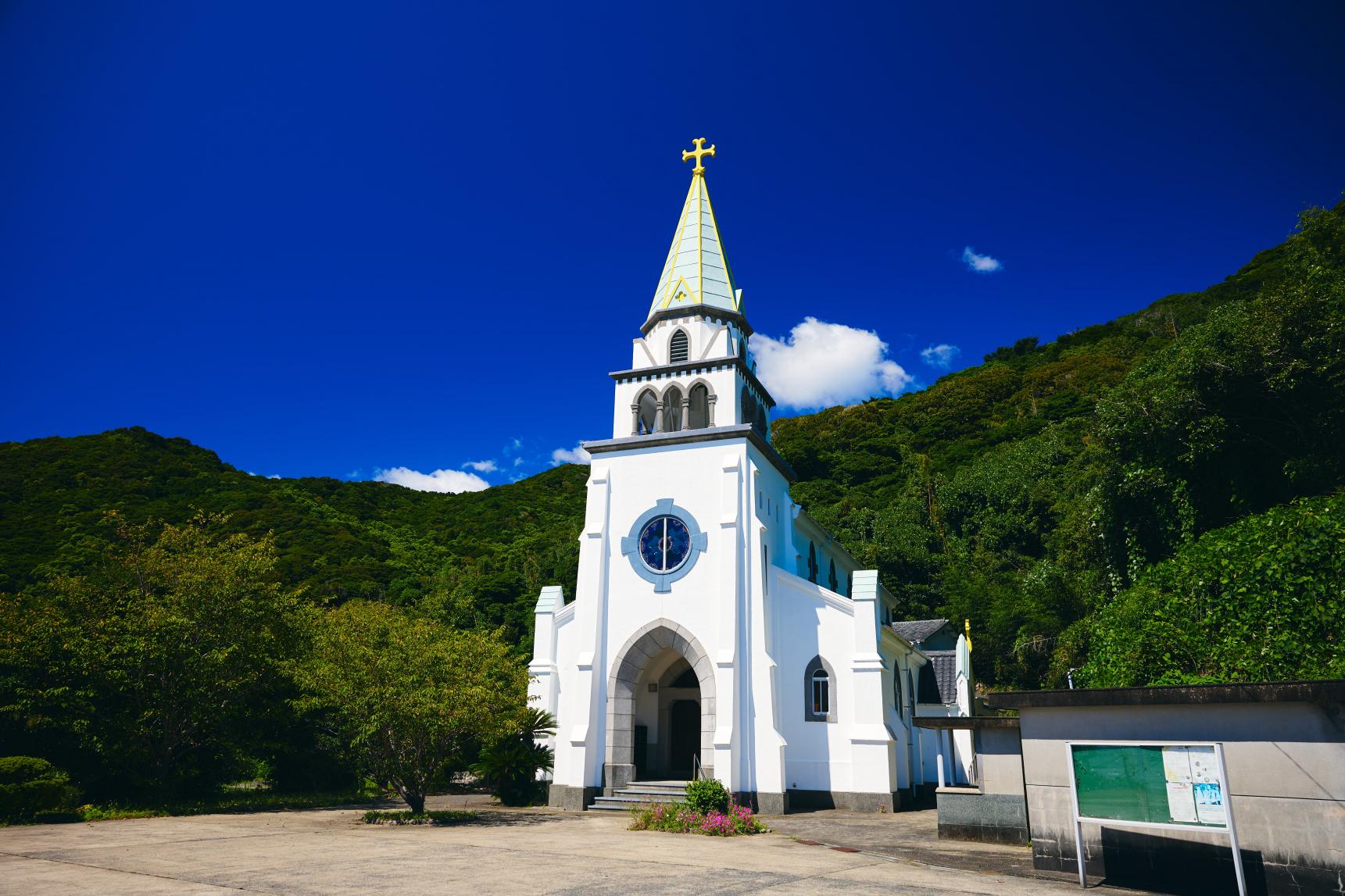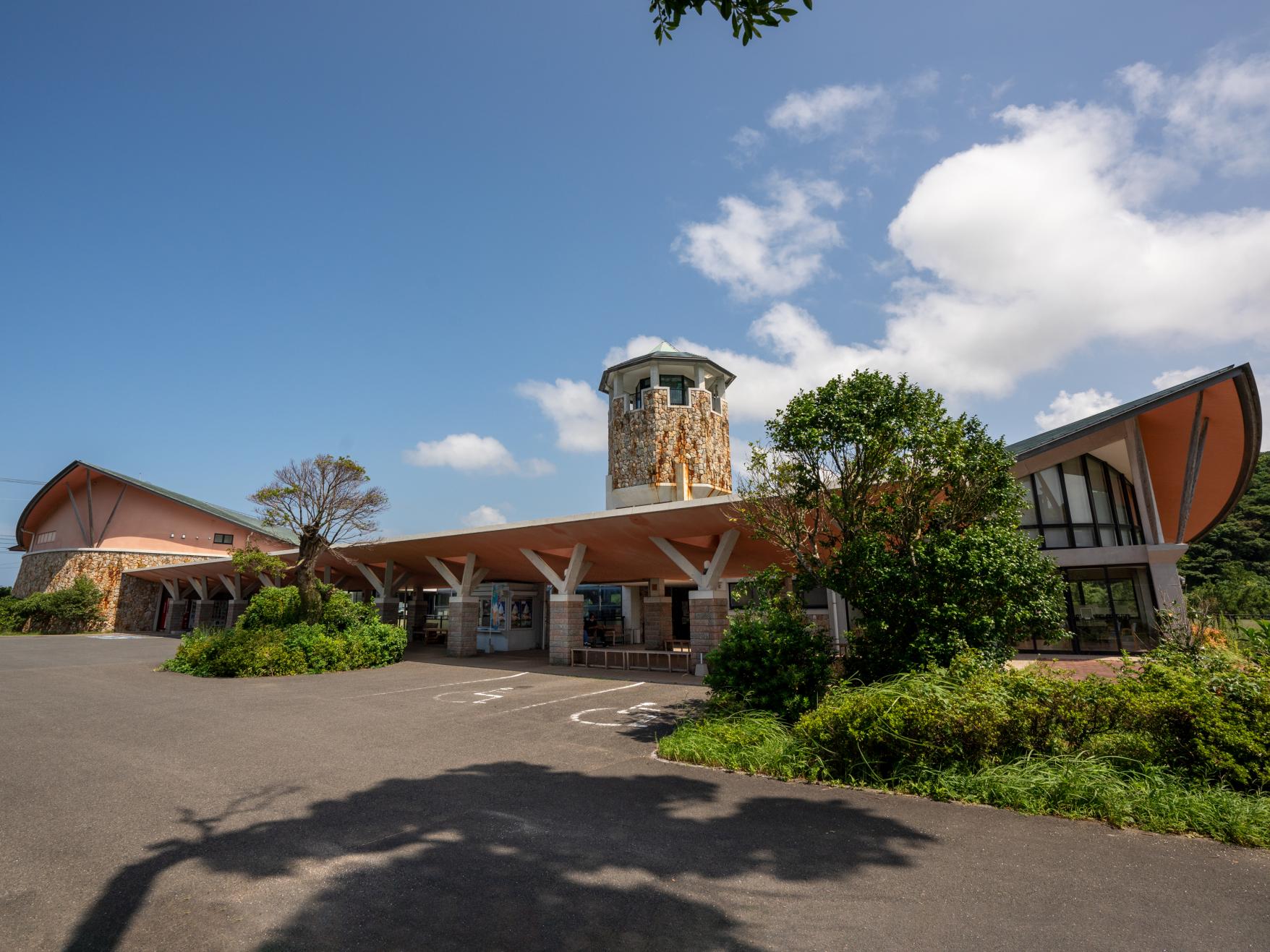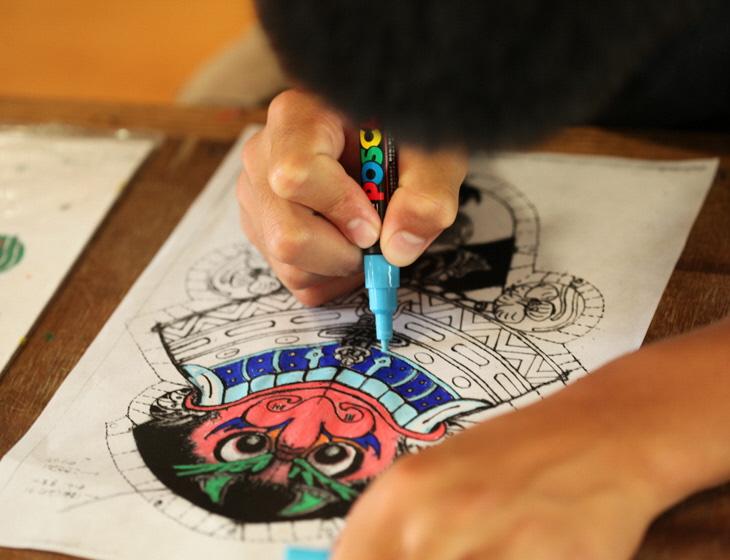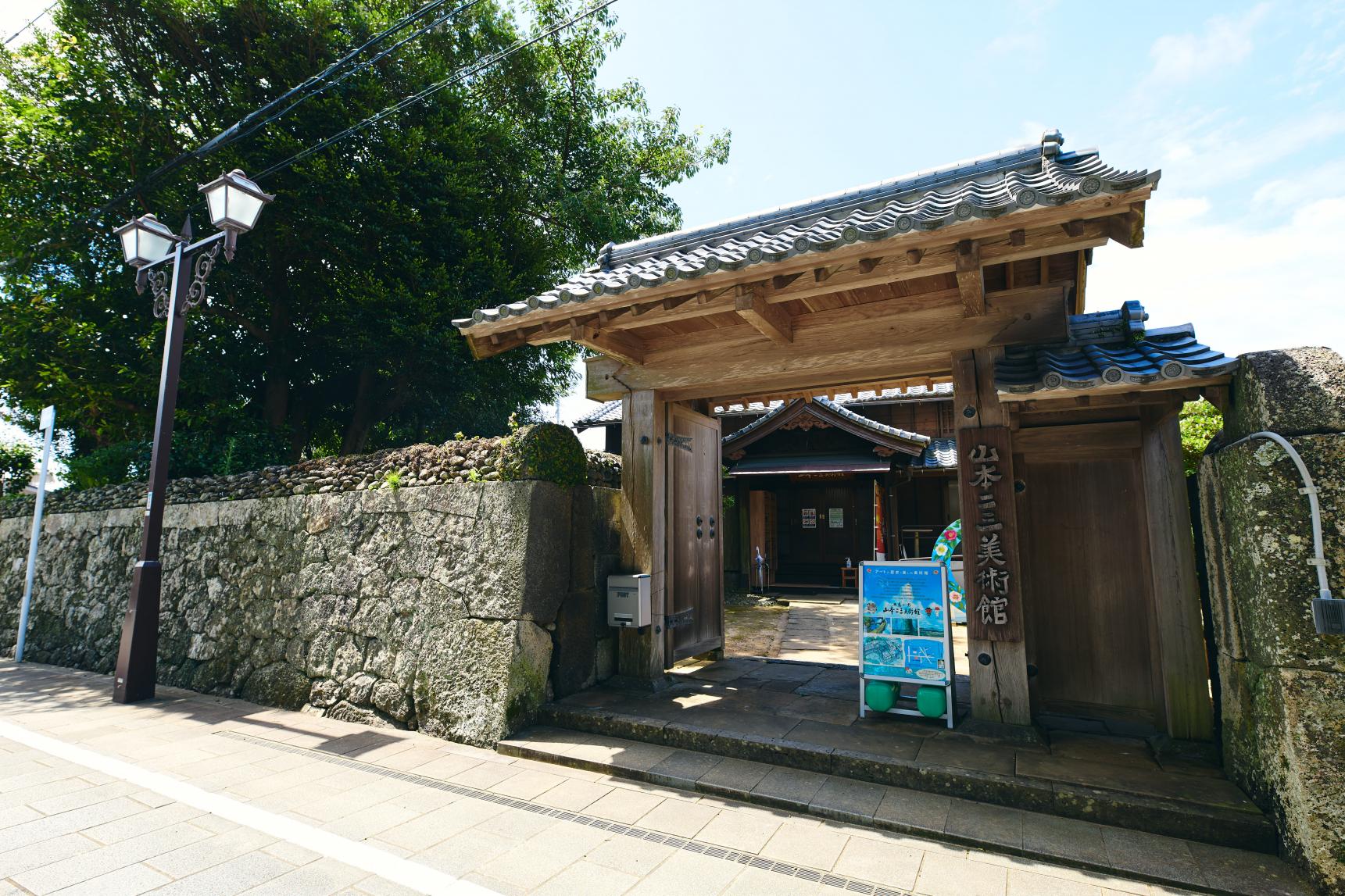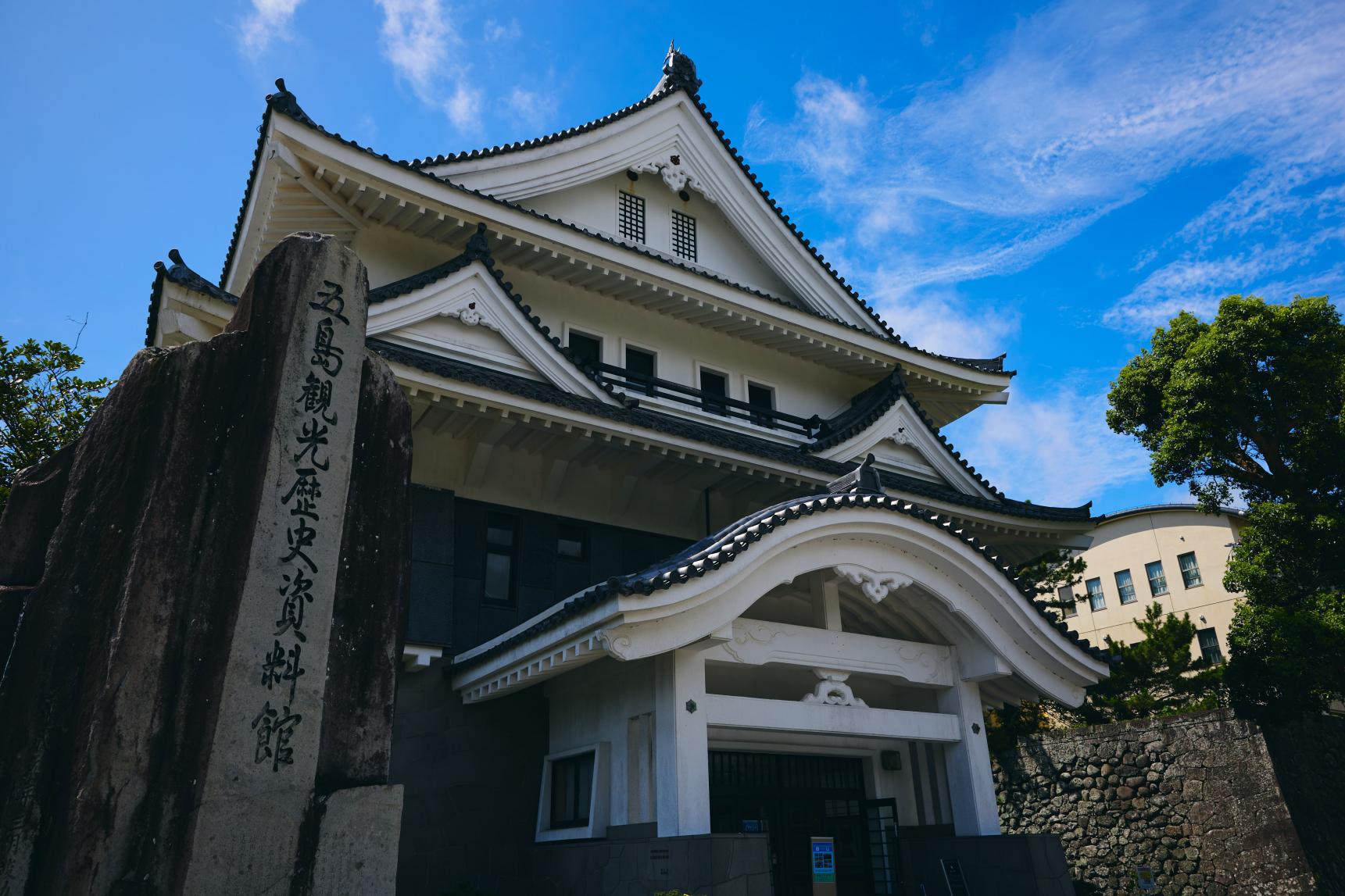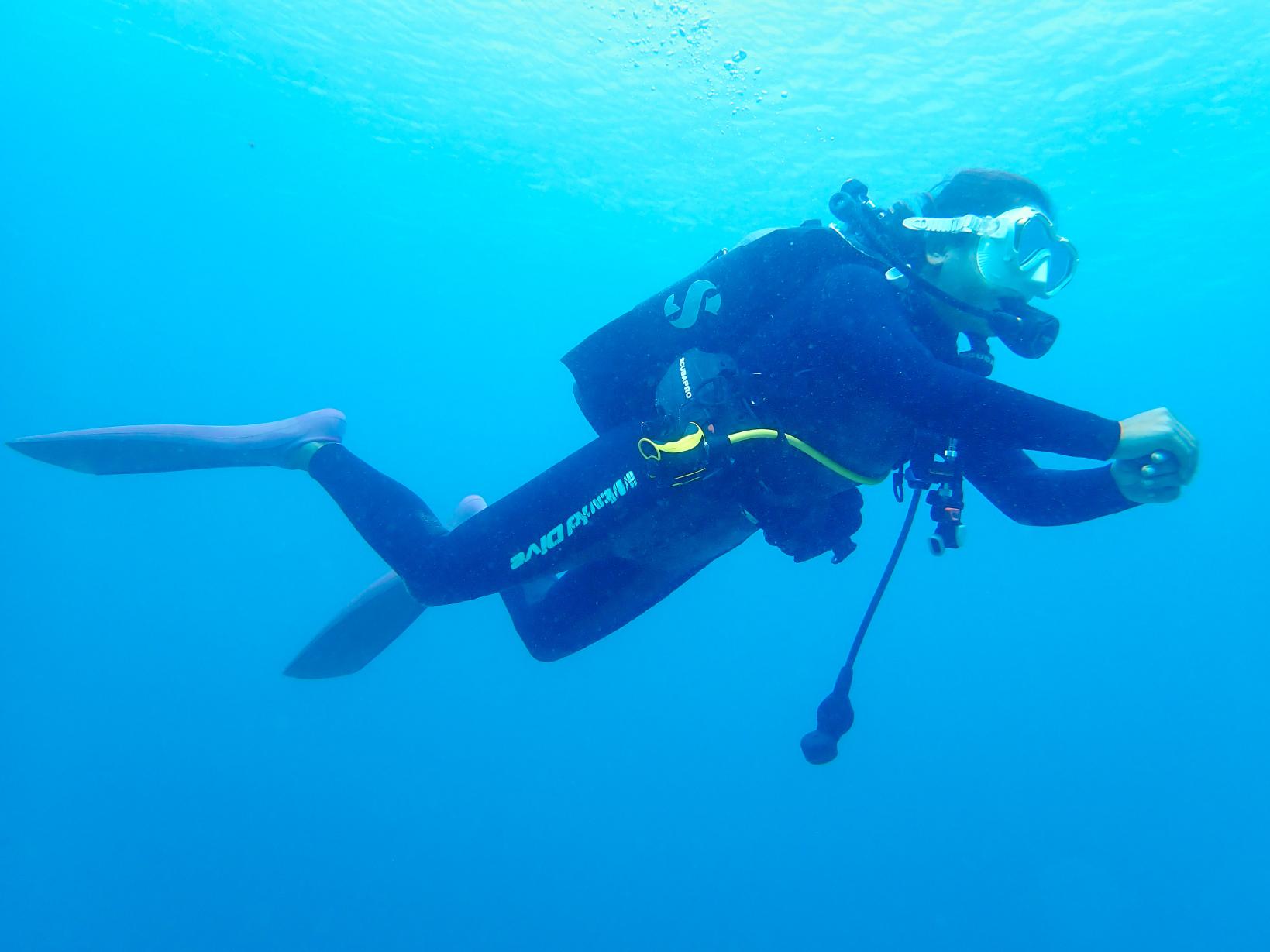
Visiting Goto’s churches, built by the hidden Christians
Goto is dotted with churches that are proof of the prayers of the believers who weathered more than 200 years of their faith being prohibited. Egami Church and the Former Gorin Church Hall are among the Hidden Christian Sites in the Nagasaki Region, registered as World Cultural Heritage. Why not visit these churches, constructed in the beautiful scenery of the Goto Islands, and feel the wishes and hopes of the Christians?
*You must contact Egami Church and the Former Gorin Church Hall in advance to tour inside.
*Churches are sacred sites of prayer. Please follow the rules and etiquette when visiting.
Contents
History of the hidden Christians
Goto is known as an area where large numbers of early Christians settled after Christianity was brought to Japan in 1550. However, the Tokugawa shogunate banned Christianity in 1614, resulting in many Christians outwardly acting as followers of Buddhism while continuing to follow their faith in secret. This was the start of the hidden Christians.
The Goto Islands’ physical isolation meant that they were a suitable place for the hidden Christians to protect their faith, and these believers formed communities deep in the islands’ mountains and interior. They carried hidden religious items such as iconography and crosses, passed prayers and teachings to the next generation through oral instruction, and developed their own form of the religion.
The prohibition of Christianity was lifted in 1873, and the believers returned to Catholicism and built one church after another. The Goto Islands are home to 50 churches, symbols of the end of around 250 years of “hidden” Christianity.
Etiquette when visiting churches
Churches are sacred places for believers.
If you are visiting for sightseeing, please respect the etiquette inside the churches and do not trouble other people.
Rules to follow
■The alter is a sacred place. You must not enter this area.
■Mass is a sacred ceremony. You may not take photos.
■Eating, drinking, and smoking are prohibited inside a church.
■You must not shout or raise your voice, or run around. If you are accompanied by small children, please ensure they are supervised while touring the church.
■You must not touch the religious items or decorations in the churches.
■The toilets in the churches are for members of the church; please use the toilets outside the churches.
Pilgrimage Q&A
Q: Is there anything I should know about clothing?
A: You can wear what you like, but you should avoid revealing clothing, and clothing such as extremely short skirts and shorts in the summer. It's fine if you wear a cardigan or something similar; just keep your clothing within the range of common sense.
Q: What should I be aware of inside the churches?
A: Eating, drinking, and smoking are forbidden in the churches. You should also avoid thoughtlessly touching items in the churches (religious items, decoration, etc.). Note that the sanctuary, the highest part of the church where the altar stands, is forbidden to everyone but the clergy, so you must not enter this area.
Q: Can I take photos?
A: You can take photos outside of the church, but in principle taking photos inside is forbidden. Please only take mental pictures of the places you can't capture with a camera.
Q: I’m not a Christian; can I take part in Mass (religious service)?
A: Mass is held in most churches on a Sunday morning, and some churches ask non-members to refrain from visiting during this time. Note that even if you do participate, the Eucharist (the ritual of receiving small white bread loaves during Mass) is limited to church members, so please remain seated quietly during this part.
Q: I found the church soothing, how do I give something in thanks?
A: The churches have contribution boxes, where visitors can leave expressions of thanks. Why not add your feelings to the contribution box?
Visiting churches
Goto City is home to 20 churches, including Dozaki Church, which served as a site of revival after the prohibition of Christianity was lifted.
Accessing the churches on the small islands isn’t necessarily easy, but there are tours, so check these before you head out.
*You must contact Egami Church and the Former Gorin Church Hall in advance to tour inside.
Egami Church
World Cultural Heritage Asset, Japan Important Cultural Property
This rustic wooden church with a cream exterior and charming light blue window frames stands in a forest.
Former Gorin Church
World Cultural Heritage Asset, Japan Important Cultural Property
This is the oldest church hall on the Goto Islands. It stands in a quiet cove, which is only accessible on foot or by boat.
-
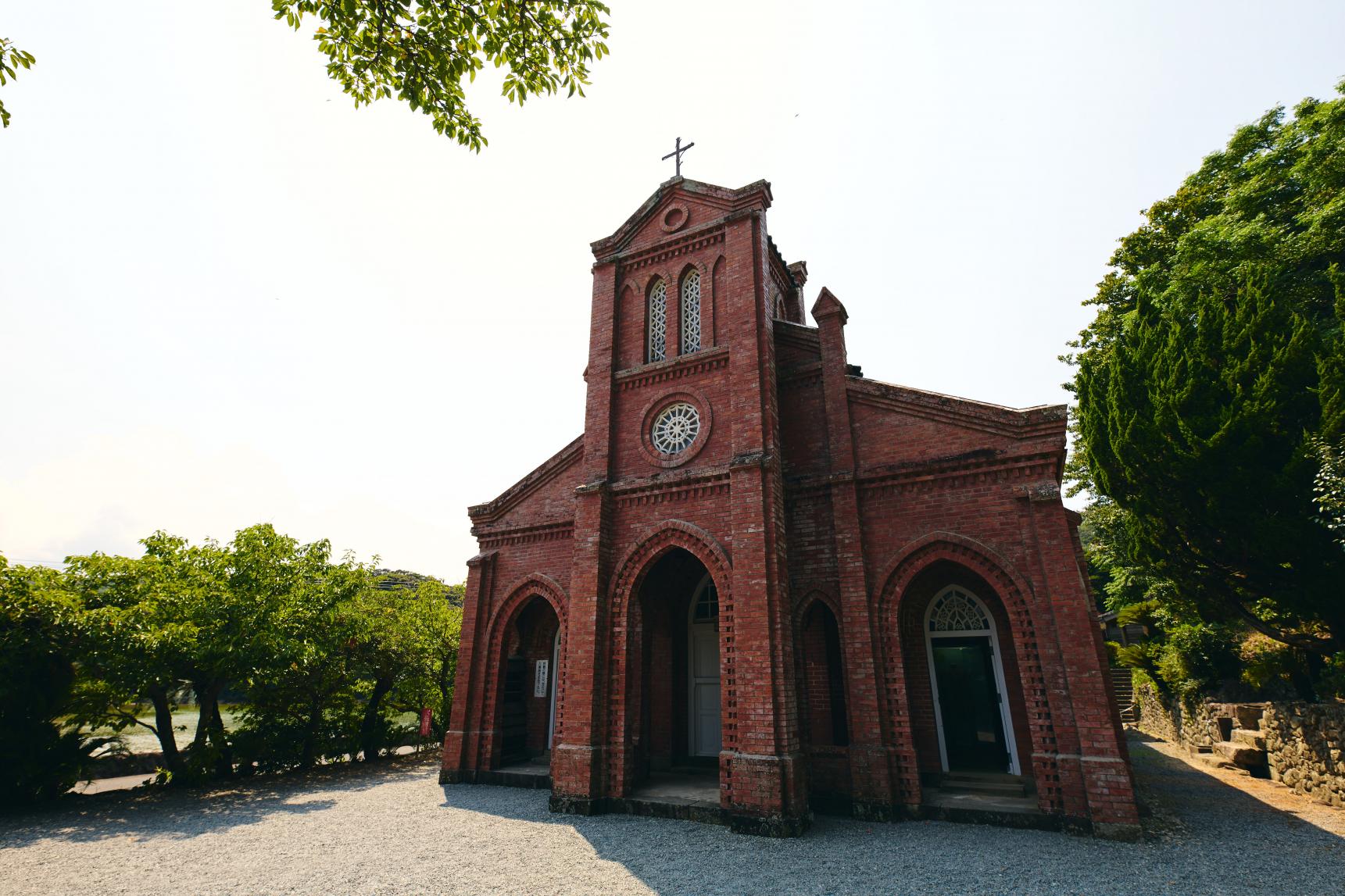
Dozaki Church
See MoreThis red-brick church was built next to a quiet cove. The inside of the church is now a museum of early Christianity in Japan.
-
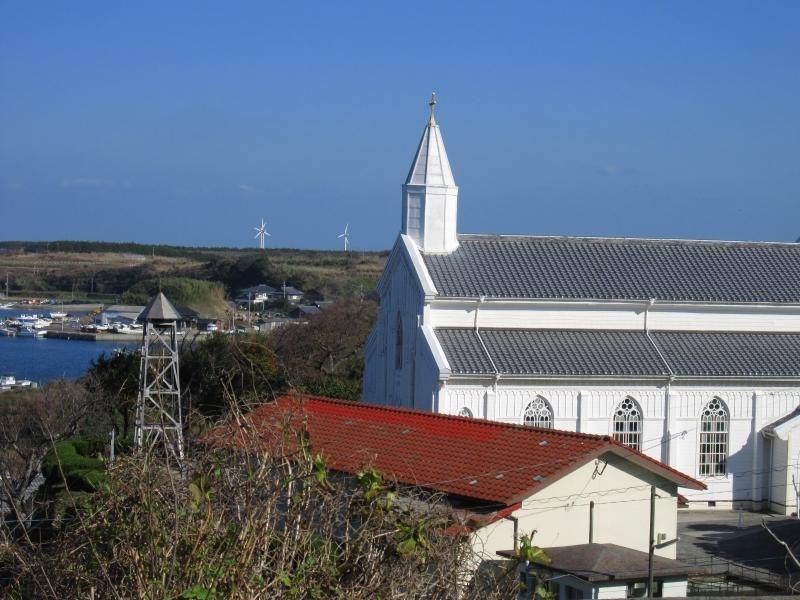
Mizunoura Church
See MoreThis white-walled church was built on high ground and reflects the blue of the sky and sea. It is also the largest wooden church.
-
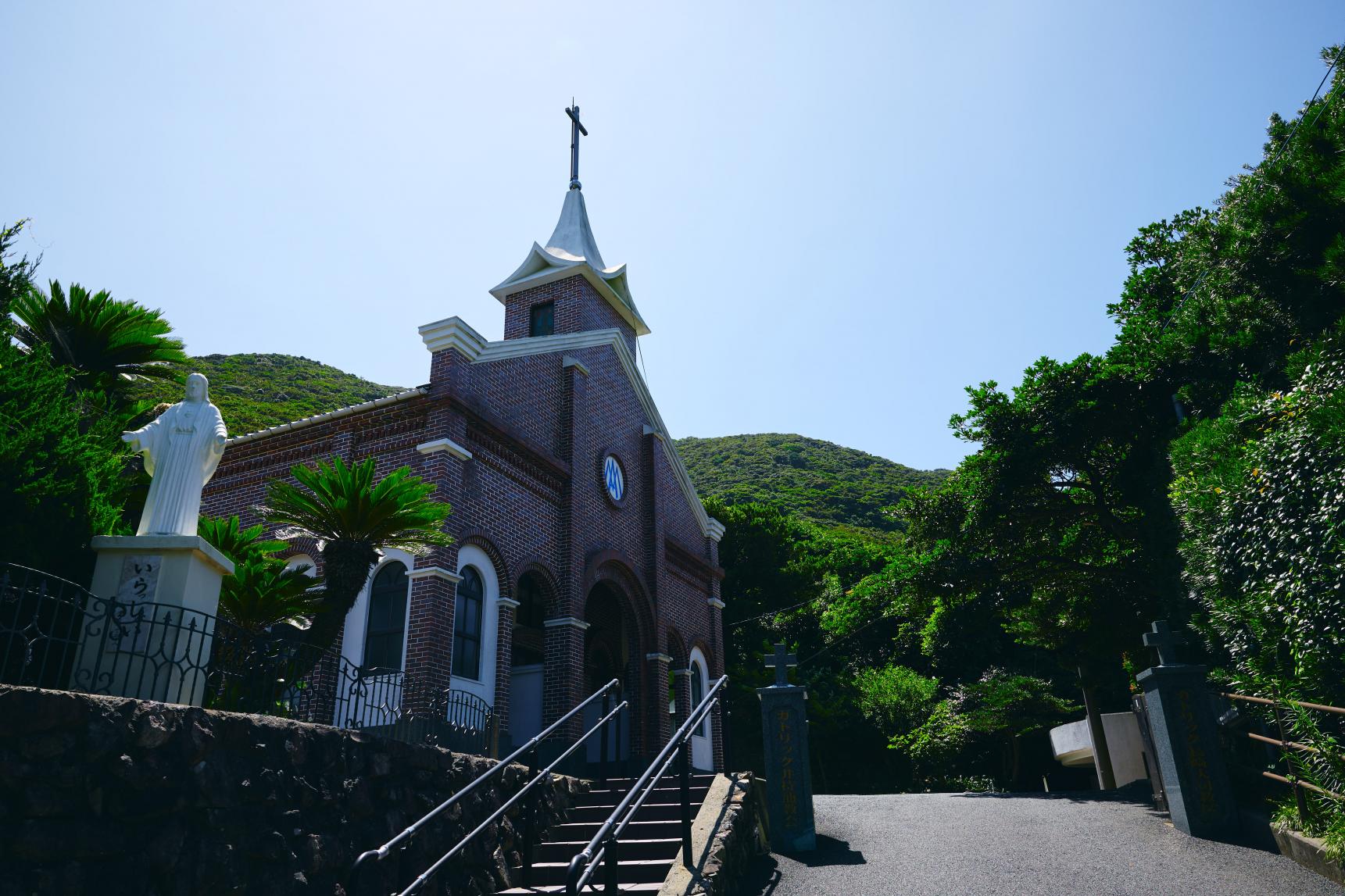
Imochiura Church and Lourdes Grotto
See MoreA truly miraculous spring with extraordinary waters runs through Japan’s first Lourdes Grotto.
-
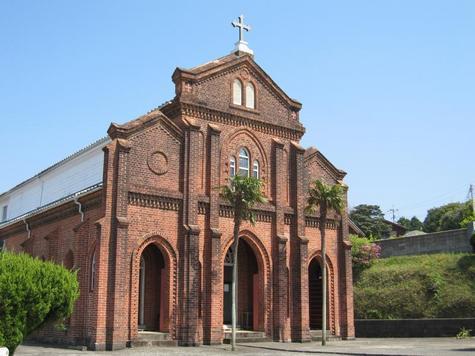
Kusuhara Church
This brick-built gothic church with a rib vault ceiling is the second-oldest extant church in Goto City.
-
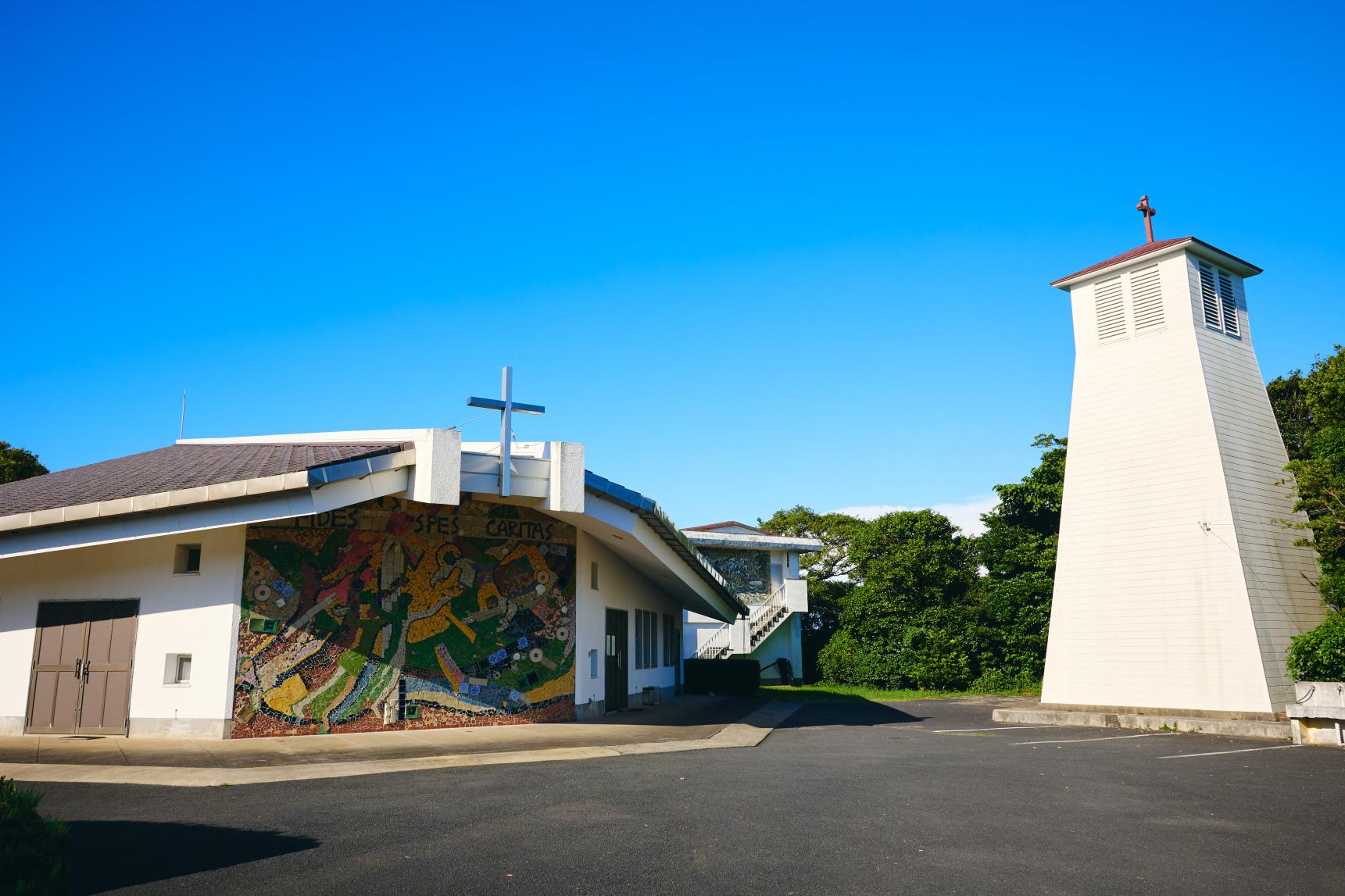
Miiraku Church
See MoreThis church has mosaic wall art made from shells and ceramics, and colorful stained glass inside.
-
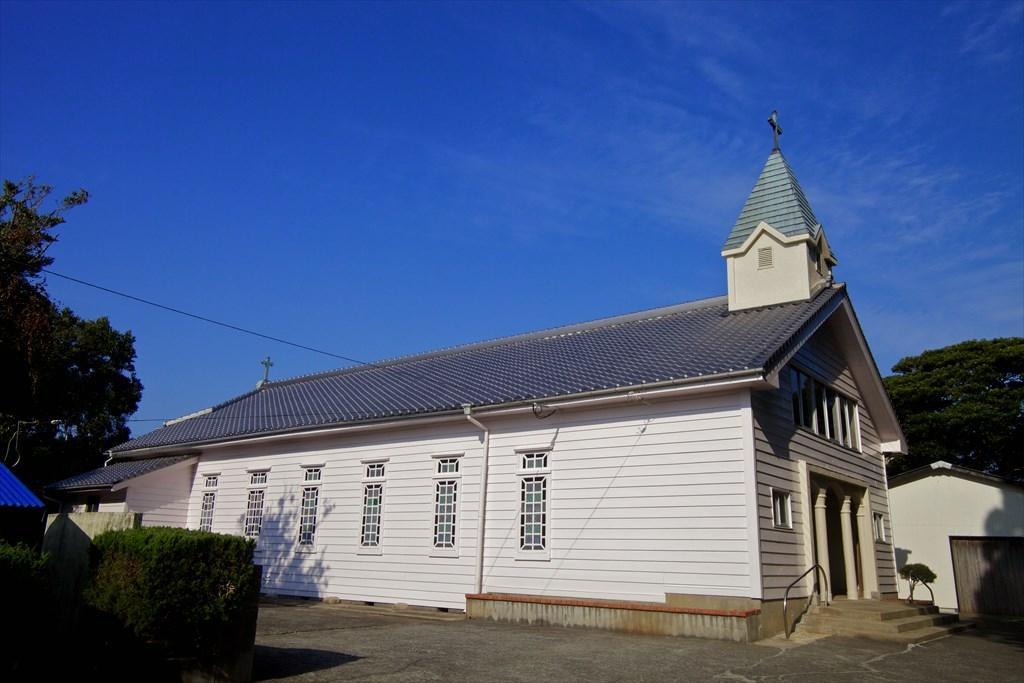
Kaitsu Church
Vivid illuminations created by the red, blue, and green light shining in through the stained glass color the inside of this white-walled church.
An eye-catching church ceiling
This church ceiling is a rib vault ceiling, which forms a wide space. In Japanese, it is known as a “komori (bat)” ceiling because it resembles the shape of a bat’s open wings, and its beautiful arches create a stately feel.
You can see different kinds of ingenuity and beauty in each church.
[Church with rib vault ceiling]
Egami Church・Former Gorin Church・Hamawaki Church・Dozaki Church・Mizunoura Church ・Kusuhara Church・Imochiura Church
*Photography is not permitted in the churches
Pay attention to the stained glass
Gentle and mystical light from stained glass beautifully illuminates the inside of church halls. You can see handwriting and hand-made glass on the stained glass windows of the churches on the Goto Islands. Get a sense of the desires and ingenuity of the people of the past, who wanted to make their churches beautiful with their limited resources and techniques.
[Churches with stained glass (some stained glass windows)]
Egami Church, Naru Church, Former Gorin Church, Hamawaki Church, Dozaki Church, Uragashira Church, Fukue Church, Mizunoura Church, Kusuhara Church, Miiraku Church, Kaitsu Church, Imochiura Church
*Photography is not permitted in the churches
Ranking of popular articles
-

Head to the Goto Islands for fishing in Japan! Guide to fishing spots and boats
-

A treasure-trove of food! Gourmet highlights to savor in Goto in Nagasaki Prefecture!
-
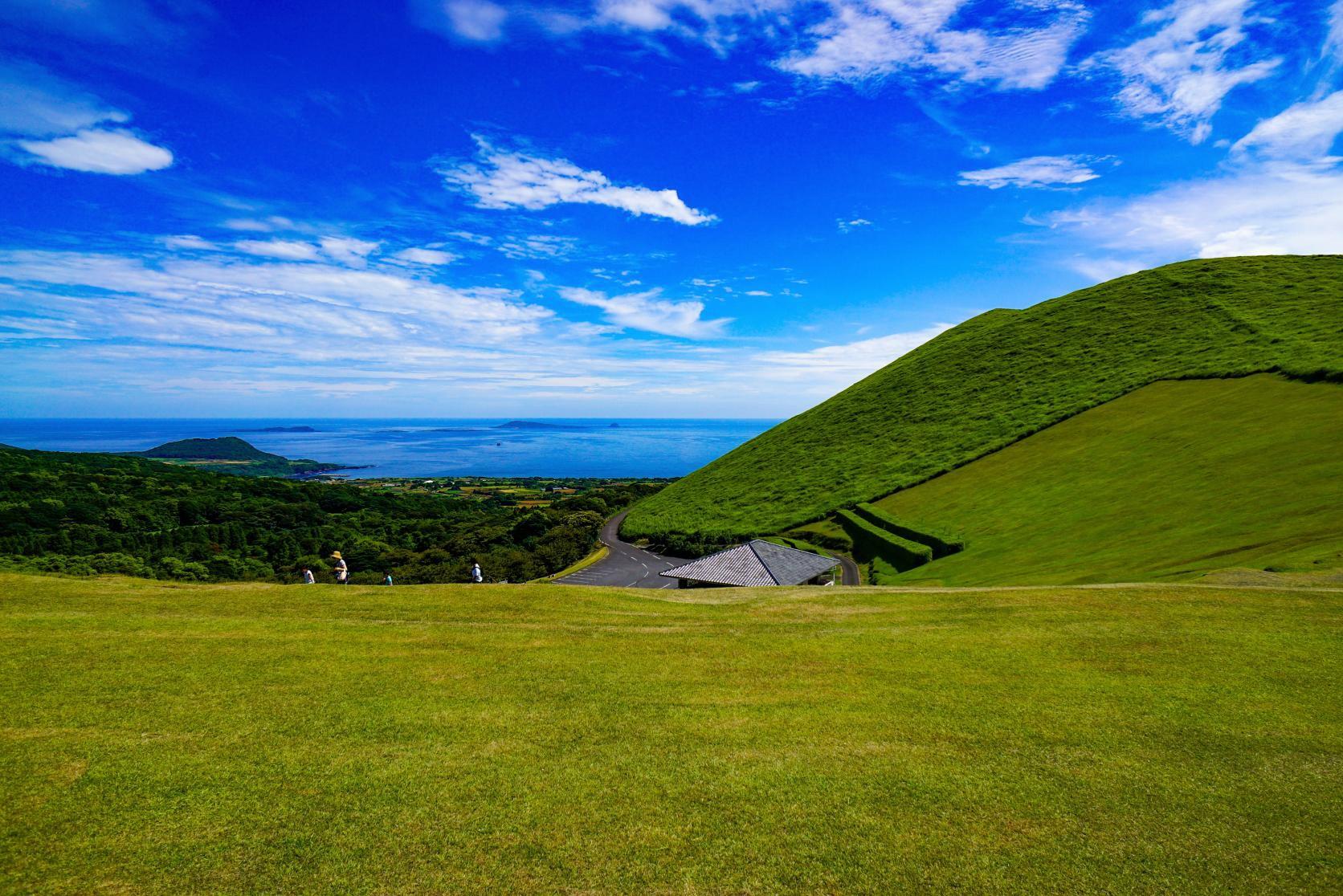
Mt. Onidake: The symbol of Fukue Island
-
![[Start from Kumamoto] Guide to visiting Goto via Shimabara Peninsula-1](https://goto.nagasaki-tabinet.com/storage/special_features/224/responsive_images/1PpFaHmhgPQdnRcgqQn5ZOH17NraRvAWKrl11f1f__1000_765.jpeg)
[Start from Kumamoto] Guide to visiting Goto via Shimabara Peninsula
-
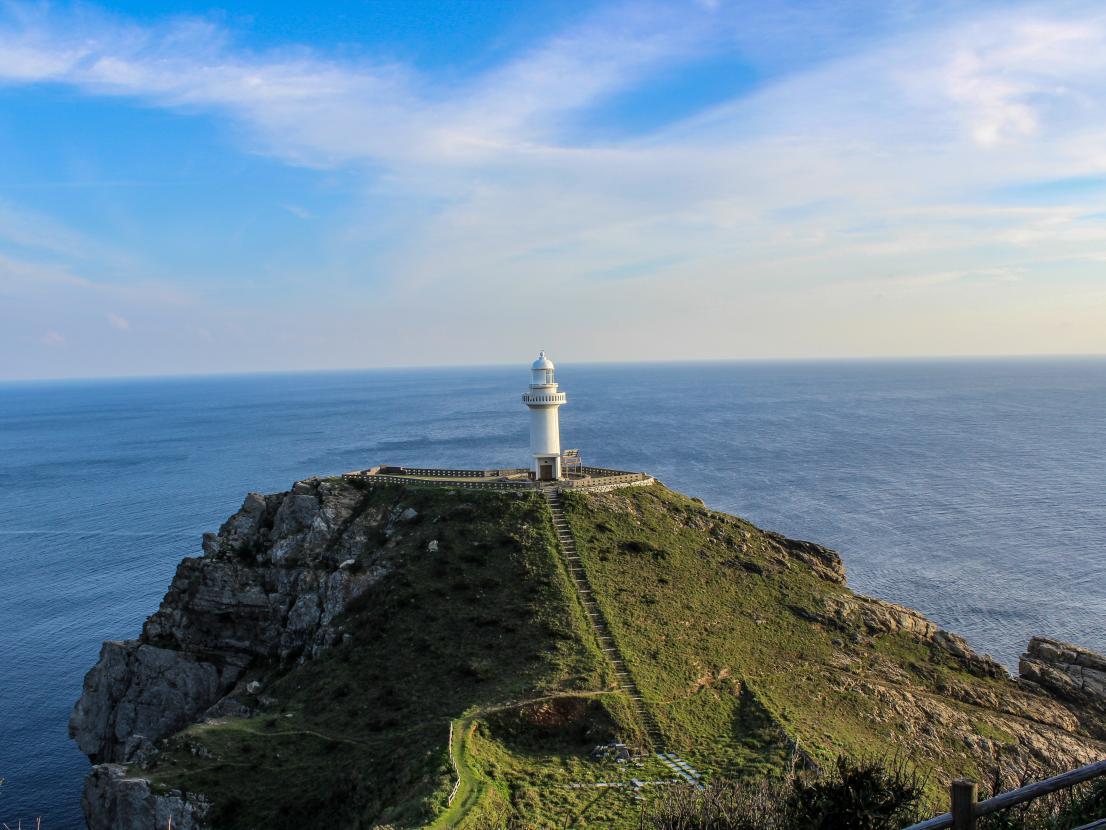
Tourism guide for first-time visitors to Goto: Introducing islands where nature and history exist in harmony


